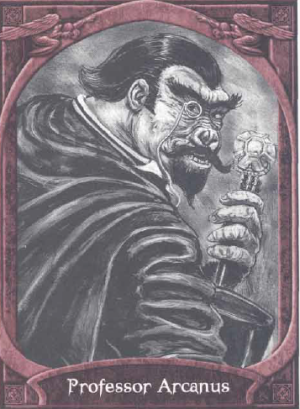 The Vistani (and by extension The Carnival) are the default “traveling band” for the setting, but there are many travelers who brave the Mists using safety in numbers. One of the greatest advantages of using such a group in a campaign is that they can appear in a wide variety of domains, whether in the Core, island or cluster. For those times when you need to have the adventure come to your players, here are a few ways to have hell (or heaven) on wheels. 1) Professor Arcanus Since the events of CotN: Werebeasts, Arcanus no longer has the luxury of being a one man show. On the night one of his exhibits came back to life, he was saved by a band of traveling adventurers, but he was revealed as a lycanthrope, and one of their number become a carnivorous ape. They now travel with him under the guise of fellow performers, secretly seeking a cure for both Arcanus and their friend, who has been trained to perform and assist. His new allies have taken on his penchant for showmanship and exaggeration, and they include an anchorite of the Erudite tradition who has had some success navigating the Mists. 2) Morts-qui-Dancent The Book of Sacrifices tells the tragic story of a group of musicians who “just wanted to make music.” They now travel from place to place, compelled to do just that or suffer horrible consequences. The undead musical troupe cannot navigate the Mists, but they are generally content to let fate decide their path. Despite their nature and circumstances, they tend towards benevolence, and uniquely suited to survive anywhere, including places the others cannot, such as the Necropolis or Keening. 3) Black Avlyhn First described in the Notes on Doppelgangers, this annis travels with over thirty of her own murderous doppelganger children, who believe that they are immature hags. They use their talents to play the part of Vistani, but are basically just roving thugs. The ones that have gone through puberty can appear as male or female, but visitors may note that all the children in the band of “Vistani" are female...and identical except for their ages. Recently, the band forced a mist ferryman to bargain for its life with passage through Mists. Since then, Avlyhn has prepared a magic circle to capture the next ferryman they encounter, in the hopes that they will be able to trap it and use it to truly travel like Vistani. 4) Rhennee Stranded generations ago in the Greyhawk setting where they learned to ply the Nyr Dyv, the barge folk may adapt to sailing Lake Kriegvogel or Lake Zarovich. Their distinctive customs and unusual magic are similar to the Vistani but with a few memorable contrasts. Obviously using barges instead of wagons is a significant difference, and PCs expecting a Vetha to break out the cards for a fortune telling might see her pour a bucket of bird entrails off the back of the barge instead. A grim Darkhagard’s distinctive weapon and combat style will make an impression whether he's an ally or an enemy. 5) The Dreamspoken Forbidden Lore introduced the Ildi’Thaan, and the first Gazetteer expanded on the Thaani ethnic group associated with them. But while many Thaani are troubled by dreams of Bleutspur, not all of them follow where the dreams lead. The Dreamspoken are Thaani with budding psionic powers who flee the lure of the Ildi’Thaan, developing their powers themselves while traveling the world. Coming from Barovia where Vistani are so well respected, it’s common for them to run away with with the Vistani for protection. Some of them return to Immol every few years to pick up new Dreamspoken, growing into larger bands that adopt Vistani dress and customs, mimicking Vistani magic with psionic powers. This has resulted in false reports of Vistani boys with the Sight, or Vistani with other unusual powers. 6) The Soldiers Of Truth Warden Cyrus Townsend is a powerful anchorite who leads this band of Ezra’s faithful. With planning and precision, they Mistwalk to a theocratic domain such as Pharazia, astound the locals with a practiced barrage of miracles and proselytizing, and disappear back into the Mists before the authorities can muster a response. Most locals are grateful for the food, water, and healing, but a few risk their lives to hide and read the forbidden texts, hoping to be rescued back to the Core at the next visit. Townsend’s “wonderworking" is an extremely risky enterprise, but its success has spawned imitators, especially among the Nevuchar Springs Sect. The latter, of course, don't always bother to ask people if they want to be rescued…. When looking for a traveling band to play a role in your game, consider the role you want them to play, whether rescue through the mists, a source of information or goods, mysterious foreshadowing, entertainment, healing, or just ambiance. Many of the above can fill those roles while creating a sense of a much larger world, with room for many varieties of travelers braving the Mists to see where fortune brings them. Leyshon Campbell has been playing and writing for Ravenloft for over twenty years, from the Kargatane's Book of S series, playtesting D&D 3E in a Ravenloft campaign, to the ill-fated Masque of the Jade Horror. He married his wife on Friday the 13th after proposing to her on Halloween. By tradition, the first story read at birth to each of their three children was The Barker’s Tour, from Ravenloft’s “Carnival” supplement. He is currently running the “Queen of Orphans” Ravenloft campaign on Discord.  If you want to help High Level Games continue to produce great content and launch the careers of the next generation of creators, we'd love it if you stopped by our Patreon to show your support. Of course, if you'd like a little something for your hard earned money, you could always pick up one of our fine game products as well. Greetings, traveler! I must say I’m relieved you survived your excursion in Lamordia. Also, I wouldn’t worry overmuch; I’m sure the Baron’s soldiers will eventually tire of looking for you. Since hiding in the basement of a safehouse can get quite dull (as I well remember!) I thought you would appreciate a little light reading material. Thinking of Mordenheim’s wayward creations got me thinking about the nature of corruption. It seems as though corruption from a person or thing’s original purpose is a not uncommon occurrence in the Mists. We’re all familiar with notable examples like Blackroot, of course, but the once noble treant is hardly the only such case. 1) Splinterwaif Travelers through the unspoiled wilderness may have encountered the elusive dryad: an innocent forest spirit tied mystically to a single virgin tree. Folk legend holds that harming the tree harms the maiden, and should the tree perish, so too will the dryad. (Folk legend also holds that driving a knot on said tree will compel the spirit to become your bride, but I suspect the latter part of the tale has more to do with woodsmen starved for feminine affection than actual fact.) But what happens if the tree is not merely cut down, but hacked to pieces, sliced and planed, rendered into dozens of boards, and then hammered together with iron spikes to fashion a pigsty, fish stall, brothel, or other shelter of slaughter or vice? Are fey spirits not just as prone to malevolent haunting as human spirits? They are. Such atrocity can give rise to a splinterwaif: a dryad spirit twisted by hatred and abuse. These hideous creatures lurk in slums, junkyards, and alleys, stalking children and the infirm to drain the life force of the living to sustain themselves. Only small, woody shrubs remain where their victims once stood. Stats for the splinterwaif can be found in the Monster Manual III. 2) Midnight Unicorn Many outlanders I’ve spoken to have told me stories of the noble unicorn: a creature of purest innocence, which dwells in forest glades and blesses those it deems worthy with protection and healing. Legend has it that the touch of their horn can banish any impurity, even poison or illness. The only such being I’ve encountered was far from these legends. Its coat was as black as coal, and a fierce malevolence burned in its glowing red eyes. The silver horn spiraling from its skull sported wicked barbs along its razored length. Most disconcerting of all was the unearthly shriek that it accompanied its arrival. When it vanished, just as suddenly, the silence was nearly as terrifying. If I had to guess, I would suspect that unicorns are occasionally drawn in by the Mists just as Outlanders are. Their close connection to the land, like elementals, eventually seeps into their very being, and they find themselves twisting into a hateful mockery of their former selves. Black unicorns can be found in the Monsters of Faerun compendium. 3) Boxwood Defenders Once, on the invitation of Lord Pennybore, I travelled to Darkon to attend a large dinner party. Woefully, it turned out to be an ambush, as Pennybore (in reality the hidden Blackburn-Bruce scion I’d been hunting for nearly a year) had laid out an elaborate trap to kill me. Perhaps most terrifying was his hedge maze. Filled with blind turns and dead ends, as well as dozens of boxwood sculptures, each trimmed to the shape of a fearsome soldier or diabolical beast, it was very nearly my tomb. The sculptures came to life, and I found myself pursued, unarmed and unarmored, through an unlit maze, stalked by living extensions of the hedges themselves. I’ve heard that such creatures can be created by skilled mages, but I fear that exposure to too much wickedness (and the tainted nature of the Mists themselves) can lend these guardians a cruelty they would lack in their ‘natural’ state. To add boxwood defenders to your haunted mansions, check out the topiary guardian statistics in the Monster Manual III. 4) Cyclopes Religion is a powerful thing. When twisted by grief and neglect, that power can be terrible indeed. Although rare, I’ve encountered more than one instance of a religious idol persisting even after the death of the congregation that once worshipped before it. Regardless of the tenets of the original faith, these fallen icons mar their features beyond recognition and pursue eternal vengeance against those they hold accountable for the loss of their faithful. (I assume there’s a convoluted reasoning at work, but typically this category includes everyone they meet.) Dripping spectral blood from their ruined visages, they strike fear into the hearts of those they assault, and madness in the minds of any unfortunate enough to touch their ectoplasmic vitriol. Fortunately for most, these cyclopes tend to be somewhat unsociable. They are most often found in the wild, isolated places their faithful once gathered, haunting the sites of their former glory. Unfortunately for you, these are just the sorts of places your profession sends you to time and time again. Renegade religious statues use the rogue eidolon stats from the Monster Manual II. Conclusion Scholars have gone back and forth on the corrupting nature of the Mists and the truth behind outlander tales of unadulterated versions of some of our more common monstrosities. If nothing else, these sorts of discussions make an interesting diversion when one is hiding from overzealous law enforcement. If you continue to have difficulties, send word in a return missive and I shall see what I can do to find a suitable escape for you. In the meantime, good luck and happy hiding, Frankie “Farshot” Drakeson, Lord Mayor of Carinford-Halldon Frankie Drakeson is a retired rifleman and the current mayor of Carinford-Halldon in Mordent. He is married to Gwendolyn Drakeson, making him Nathan Timothy’s grandson by marriage. Jim Stearns is a deranged hermit from the swamps of Southern Illinois. In addition to writing for the Black Library, he puts pen to paper for High Level Games and Quoth the Raven. His mad scribblings can frequently be found in anthologies like Fitting In or Selfies from the End of the World, by Mad Scientist Journal. Follow him on Twitter @jcstearnswriter, or listen to Don, Jon, & Dragons, his podcast. Picture Reference: https://www.pinterest.com/pin/156218680804888437/ 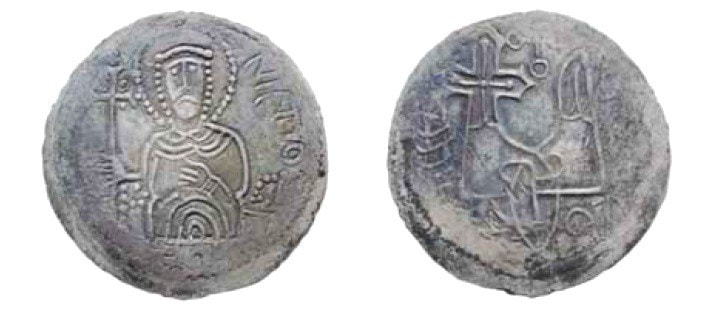 When man first began to tell tales of magic, “the curse” was one of the most prevalent legends ever told. Mortals burdened by the weight of their sins and mistakes all accumulating in a literal and magical effect. Typically they are bound to a specific item, such as an amulet, ring (perhaps just one ring. Or three. Maybe seven? I’ll settle on nine. Ah screw it,) or perhaps even a suit of armour. But really, powerful magic items aren’t as cursed as the seemingly normal ones. Demons armour? Boring. Shoes of dancing? Exhausted. So, let’s see some absolutely wicked trinkets and baubles for all you vagabonds, ne'er do wells and villainous folks out there. (All of the following curses can be removed with a remove curse spell using a 5th level spell slot or higher.) 1) Sigurd’s Mace Sigurd was a relatively kind soul, a hunter in the cold, bitter north. As such he had to be away from home for many, many months at a time to actually find game. He hunted with his longbow, but arrows were scarce, so for protection, he carried a mace in case he was jumped by bandits or waylaid by a pack of rabid wolves. One lucky afternoon, as he had just left only hours ago on the hunt, he stumbled upon a family of elk. He managed to get three down before the rest escaped him. He thought about chasing the last two down, but three elk was better than he had done in years. He started to drag them back, ecstatic at the prospect of showing his wife his freshly caught game, fresher than she had seen in a long time. He walked through the front door, trying to track her down, and found her in the bedroom. It was a mess. Clothes were strewn about and his best friend was lying there naked beside his wife. He stood, stunned above their nude forms. They stared back at him. Honey… I can explain… That was all it took. He drew his mace and beat them both to death. After breaking their knees to stop them from escaping his wrath, he proceeded to destroy the rest of their limbs. He caved in his wife's chest, and as the last breath escaped her lips his old friend looked to him. I’m sorry Sigurd. I love you like a brother. Sigurd pushed him off the bed, onto his back, and sat atop him. He pressed the haft of his mace against his throat, and forced the life out of his friend. He stood over the two lovers’ mangled forms and realized his sin. Sigurd took the pointed tip of mis mace and jammed it through his skull. But there’s no rest for the wicked… Sigurd’s Mace, also known as Cripple, is a cursed mace. It's a black iron mace with a 5 inch protrusion at the top used for stabbing, which is always wet with blood. Once attuned to Cripple, the wielder cannot unattune until a proper remove curse spell or similar effect is used on them. While attuned, you have a +3 to attack and damage rolls, and a +5 if attacking a creature who is or was friendly towards you at one point or another. However at dawn each day you must roll a DC 18 constitution check or begin to attack your closest friend, believing they have betrayed you. You can reroll the check whenever you take damage, or every minute the effect lasts. If you have failed the check three days in a row, roll on the long term madness table in the DM’s guide. You also have a +2 on rolls to track animals while attuned to this mace. Cripple seems to get warm to the touch whenever near someone the wielder cares for. 2) The Witches’ Coin Deep within coves and hobbles lie witches. Witches crafting spells. Witches cursing. Doing more… witchy stuff. The point is they make a lot of little trinkets and whatnot. One of the most prized is the witches’ coin. Crafted with clove, cinnamon, clear quartz, smoky quartz, a topaz, an opal and rosemary, all casted upon in an elemental circle with a single coin of any value within. This enchantment has been known to be put on gems, but that is a significantly more expensive and less versatile idea. Many an empire has risen and fallen thanks to these simple coins bound to witches and their strings of fate. A witches’ coin is bound to a witch. If a witch gives you this coin, you fall under the curse. While cursed, the witch always knows your general direction, can cast Scry on you whenever they want without expending a spell slot and cast Hex on you without expending a spell slot. When the coin is flipped, the witch can choose weather it lands on heads or tails or its side. You cannot rid yourself of the coin, if you try to throw it away or dispose of it in a non-magical way, it simply reappears in your wallet or coin purse the next day. If the attunement with the witch is broken a wizard of the necromancy school or a warlock of 5th level or higher can attune to it. While attuned to the coin, you have a +3 to arcana checks. Additionally, you learn one cantrip of your choice on the warlock spell list. You also gain one extra first and second level spell slot, and can choose how it lands when it’s flipped. If you give the coin to another creature as an action, you can curse them. While they are cursed, you lose all other bonuses the coin grants and the curse as described above passes to the other creature. 3)The Cat’s Eye The Rakshasa are a dangerous and mysterious style of fiend. In and of themselves they are powerful, but their real power lies in their influence. A hundred years ago a legendary but forgotten adventuring group faced such a creature. They fortunately managed to wound it; the warrior gouging out its eye before it shifted planes and disappeared. The wizard jumped at the chance to experiment with such a magically infused component and eventually made The Cat’s Eye. This amulet was a powerful magical artefact for a long time, but the cat came back. He spread his influence to the bearer of the amulet and made the wizard kill his old allies. He slowly became more and more enthralled by the Rakshasa, until he was but another slave to its will. The Eye was lost to time for ages, and has only recently resurfaced. The Cat’s Eye is a Legendary Magical Amulet. The second it is equipped it begins to affect the user. Each day the bearer must succeed on a DC 1+X Wisdom saving throw or instantly change their alignment to Lawful Evil and serve a Rakshasa’s wishes. (X is the number of weeks the amulet has been equipped.) When equipped the bearer gains limited magic immunity to spells of third level or lower. They can also cast Detect Thoughts once per day without expending a spell slot, as well as cast Disguise Self at will. The Cat’s Eye grants advantage on all Perception checks that have to do with sight and gain darkvision out to 120 feet. Curses have always been the bane of adventuring parties and always will. Because the simple fact is, people are greedy. Greed after all is one of the seven deadly sins, and don’t sins seem to lead to curses? Meh. Maybe I’m just slowly going mad from repeated exposure to the visage of hell. Anyways, till next time: don’t die. Jarod Lalonde is a young roleplayer and writer whose passion for both lead him here. He’s often sarcastic and has a +5 to insult. Dungeons and Dragons is his favorite platform. Although he’s not quite sure if it’s Cthulhu whispering to him in the small hours of the night, or just persistent flashbacks to the Far Realm. Picture Reference: https://xcentury.wordpress.com/2014/09/05/sviatopolk-the-cursed-and-the-varangian-from-bodzia/ 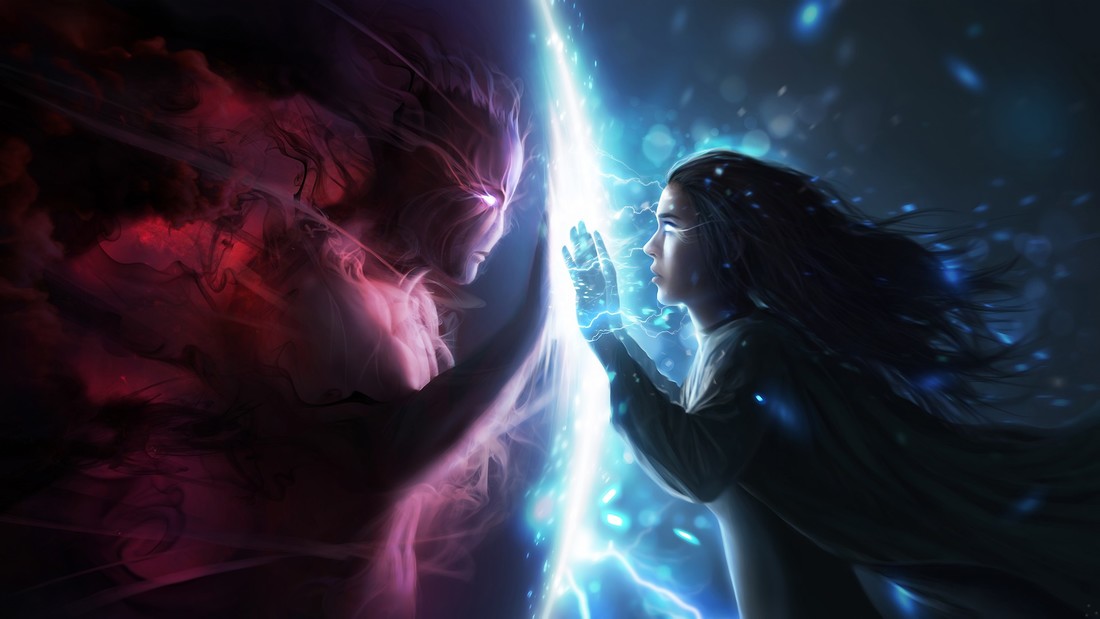 Editor’s note: There are always wheels turning here at High Level Games. I have been involved in a small handful of the many little projects we are undertaking. I have been creating new player character races for 5th edition, and have also released a small document on Time Demons. There are also one page adventures, and much much more coming to high level games. Help us grow by supporting our patreon, and get access to cool stuff! It’s a win win. Ever wanted to add a theme to the spells that your player character, NPC, or villain has up their sleeves? I have created 18 new spells for 5th edition Dungeons and Dragons to help make your spellcasters feel unique. You can either use these as a player character (DM permission required obviously) or a DM can use these spells as either treasure (scrolls) or have their NPCs or villains use them. 1) Aftershock (Level 1 Transmutation) Cast Time: 1 bonus action Duration: Instant Components: VS Choose one creature within 60 feet of you that has taken thunder damage during your turn. They take a further 2d8 Thunder Damage. AT HIGHER LEVELS: When you cast this spell using a spell slot of 2nd level or higher, increase the maximum number of targets by 2 for each level above first. All targets must have taken thunder damage from you during your turn. 2) Arcane Blast (Level 1 Evocation) Cast Time: 1 action Duration: Instant Components: VS Choose a target within 45 feet of you. The target takes 2d10 force damage, and must pass a Strength saving throw or they are pushed up to 10 feet. A successful save halves damage. AT HIGHER LEVELS: When you cast this spell using a spell slot of 2nd level or higher, increase the damage by 1d10 for each level above first. 3) Arcane Pocket (Level 2 Conjuration) Cast Time: 1 reaction, when a creature moves next to you, or when you are forced to make a dexterity saving throw against a spell or ability. Duration: Instant Components: S You teleport up to 15 ft to an unoccupied space you can see. If the triggering target attacks you this turn, they have a penalty to hit you equal to your spellcasting ability modifier. If the trigger was a Dexterity saving throw, you take half damage on a fail and no damage on a success. 4) Blaze (Level 2 Evocation) Cast Time: 1 action Duration: Instant Components: VS You create a blaze in a 45ft long cone with a 180 degree arc from you. All creature in the area must make a Dexterity saving throw. Creatures take 3d6 fire damage on a failed save, and half on a successful one. AT HIGHER LEVELS: When you cast this spell using a spell slot of 3rd level or higher, increase the length of the cone by 15ft for each level above second. 5) Cone of Acid (Level 3 Evocation) Cast Time: 1 action Duration: Instant Components: VS All creatures and objects in a 20ft cone area from you are blasted with a torrent of burning acid. Targets take 5d10 acid damage. A successful Constitution saving throw halves damage. AT HIGHER LEVELS: When you cast this spell using a spell slot of 4th level or higher, increase the damage by 1d10 for each level above third. 6) Death Coil (Level 1 Necromancy) Cast Time: 1 action Duration: 1 round (concentration) Components: VSM (A wilted flower or a rotten vegetable) You steal the essence of an enemy and then slowly claim it for yourself. A target within 20ft takes 3d6 Necrotic damage. A successful Con save halves damage. At the start of your next turn, if this spell hasn’t ended, you gain temporary hit points equal to the damage you dealt. AT HIGHER LEVELS: When you cast this spell using a spell slot of 2nd level or higher, increase the damage by a further 1d6 for each level above first. 7) Divine Glow (Level 2 Conjuration) Cast Time: 1 action Duration: 1 round Components: VS Target a 15ft by 15ft area that is no further than 60 feet from you. All enemies in the area take 2d10 Radiant damage. A successful Wisdom saving throw halves damage. All allies in the area are under the effects of the Bless spell until the start of your next turn. AT HIGHER LEVELS: When you cast this spell using a spell slot of 3rd level or higher, increase the damage by a further 1d10 for each level above second. 8) Feedback Bolt (Level 1 Abjuration) Cast Time: 1 reaction Duration: Instant Components: None You can cast this spell as a reaction after another creature casts a spell. You must be able to see this creature, and it must be within 120ft of you. After the triggering creature’s spell has been resolved, deal 2d6 psychic damage to the target, plus an extra 1 psychic damage for each level the triggering spell was. AT HIGHER LEVELS: When you cast this spell using a spell slot of 2nd level or higher, increase the damage by 1d6 for each level above first. 9) Focus (Level 1 Abjuration) Cast Time: 1 reaction Duration: Instant Components: S You can cast this spell as an immediate reaction when you fail a concentration test. You pass instead. 10) Forked Lightning (Level 2 Evocation) Cast Time: 1 action Duration: Instant Components: VS Choose a target within 30 feet of you. Choose a second target within 10 feet of the first target. Both targets take 3d10 lightning damage, but a successful Dexterity saving throw halves damage. AT HIGHER LEVELS: When you cast this spell using a spell slot of 3rdlevel or higher, increase the damage by 1d10 for each level above 2nd. 11) Healing Wave (Level 3 Evocation) Cast Time: 1 action Duration: Instant Components: VS A target within 15 feet regains hit points equal to 3d8+ your spellcasting ability modifier. You can choose for a second target, within 15ft of the first target, to regain hit points equal to 2d8+ your spellcasting ability modifier. From here, you can continue choosing additional targets, provided that each target is within 15 feet of the previous target. Each target after the second regains hit points equal to 1d8+ your spellcasting ability modifier. No creature can be targeted by this spell more than once. Once the healing wave heals three targets, the spell ends and it cannot bounce to any more targets. AT HIGHER LEVELS: When you cast this spell using a spell slot of 4th level or higher, increase the maximum number of bounce targets by 2 for each level over third. 12) Ice Lance (Level 4 Evocation) Cast Time: 1 action Duration: Instant Components: VS Line 20ft, 5ft wide. Creature in the spell’s area must pass a Dexterity saving throw or are restrained until the start of your next turn. Targets take 5d8 cold damage on a failed save, and half on a successful one. AT HIGHER LEVELS: When you cast this spell using a spell slot of 5th level or higher, increase the damage by 1d8 for each level above fourth. 13) Mitigate (Level 1 Abjuration) Cast Time: 1 reaction Duration: Instant Components: VS You can cast this spell when you are to take an instance of damage. Reduce that instance of damage by 2d10 + your spellcasting ability modifier. AT HIGHER LEVELS: When you cast this spell using a spell slot of 2nd level or higher, the damage reduction increases by 1d10 for each level above first. 14) Phantasm Blast (Level 3 Illusion) Cast Time: 1 action Duration: Instant Components: VSM (A small handful of sand) You create an illusionary cone 25 feet long from your position. This illusionary cone is one that represents a spectral charging horde of a creature you decide (ghosts, stampeding elks, etc) All targets in the vicinity of the cone must pass an Intelligence save or take 4d8 psychic damage and fall prone. AT HIGHER LEVELS: When you cast this spell using a spell slot of 4th level or higher, increase the psychic damage by a further 1d8 for each level above third. 15) Pillar of Radiance (Level 4 Evocation) Cast Time: 1 action Duration: 1 minute (concentration) Components: VS A pillar of searing radiance is channelled into a cylindrical area with a 10ft radius and a height of 120ft, centred on a position you can see within 60ft. Creatures in the area must take a Charisma saving throw, they take 5d8 radiant damage on a failed save, and half damage on a successful one. They also have disadvantage on attack rolls while in this area. On your subsequent turns, you can use your bonus action to deal a further 2d8 radiant damage to all creatures in the pillar’s area. Affected creatures who succeed on a Charisma saving throw halve damage. AT HIGHER LEVELS: When you cast this spell using a spell slot of 5th level or higher, increase the radius of the cylinder by 5ft, for each level above fourth. 16) Searing Ray (Level 1 Evocation) Cast Time: 1 action Duration: Instant Components: VS Line 5ft x 15ft. Creatures in the area take 3d6 radiant damage. A successful Con save halves damage. This deals an extra 1d6 damage to fiends and undead. AT HIGHER LEVELS: When you cast this spell using a spell slot of 2nd level or higher, increase the radiant damage by 1d6 for each level above third. 17) Skeletal Expulsion (Level 3 Necromancy) Cast Time: 1 action Duration: 1 minute (Concentration) Components: VSM (The dust of a crushed human skull) You choose a living creature within 45ft who you can see, and attempt to rip their skeleton out of their body. The target takes 3d8 Necrotic damage. A successful Constitution saving throw halves damage. At the start of each of your next turns, you may use your bonus action to deal a further 1d8 Necrotic damage to the target (no save). If the target drops to 0 hit points while under the effect of this spell, their body is ripped open and their skeleton leaps out. If the creature is a humanoid, this skeleton is under your control for the next 10 turns (1 minute) as a basic skeleton (CR 1/4), after which it crumbles to dust. It acts on your initiative, but must wait until the start of your next turn to act. If the creature is not a humanoid, the skeleton is not animated, and it crumples to the floor. AT HIGHER LEVELS: When you cast this spell using a spell slot of 4th level or higher, increase the initial damage by 1d8. 18) Timeshift (Level 1 Enchantment) Cast Time: 1 bonus action Duration: 1 round Components: VS You get one extra reaction this round. If you do not use it by the start of your next turn, it is lost. I hope that these spells have spurred you into wanting to try one, or more of them out, either as a Player or a Dungeon Master. Do you have a favourite spell in this list? Let me know! What custom spells do you use in your campaign? Peter is an avid dungeon master, role-player, and story teller. When he's not running homebrew campaigns, he is creating new worlds, or he is reading and writing fantasy stories, forever immersing himself in the gaping black-hole known as the fantasy genre. Picture Reference: https://www.walldevil.com/artwork-fantasy-hunter-magic-wallpaper-11538/ 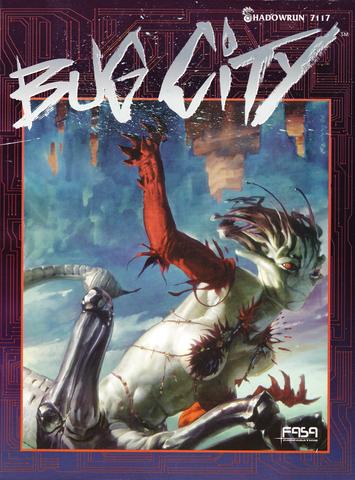 All right, tabletop roleplaying gamers. It’s time to talk about a real problem for your long-term roleplaying happiness: enemy NPC fatigue (ENPCF), or “boredom,” for short. We’ve all been there: you’re on a dungeon crawl, twelve levels down the tower, and the monsters are starting to blend together. What was that last one? Tarrak, tarrasque, tourrette… it doesn’t really matter, actually. The slavering mandibles, grating claws, and magical damage resistance all look the same at that point. Granted, it’s been fun to collect loot and advance your character, but if you wanted to go grinding or farm resources, you might as well be playing Skyrim. It’s time for a serious villain overhaul. The following are a few memorable monster villains from my own playing history. Let these creatures and people be an inspiration to your own memorable villain repertoire and take your games to the next level. 1) Rifts - The Evil Blob A telepathic alien entity had taken control of a supercomputer. The supercomputer/monster then embraced (enslaved?) a race of cave-dwelling creatures. It taught them to read, write, and manufacture; it trained them to build and use amazing technology, established a social structure and government, and it even served as a quasi-religion. All it demanded was food in return, and it received enough that it grew into an enormous, fleshy blob. Our party came at this creature sideways. We were being attacked by bands of these small, hairy, Gollum-like cave-dwellers. We didn’t think much of it, random encounters being what they are, but we started to wonder when we accidentally captured one of them. The creature told us that we had to leave, that we were invading the territory of their tribe, and that their great leader would destroy us. Intrigued, we did a bit of reconnaissance, and discovered “the blob”. In the end, however, our group determined that this blob-like creature had in fact improved the quality of life for these cave-dwellers immensely. Rather than invade and fight the blob, we decided to establish a bi-lateral trade agreement with it. Whaddya know? This was memorable because we didn’t have to fight it at all. There was enough grey area to decided that killing it would probably be worse for the hairy creatures in the end. To keep things interesting, create villains that the characters don’t need to fight, but can be overcome in other ways. 2) D&D 3.5 - The Vampire Lord With The Crazy Castle This villain is both a creature and an environment. At the beginning of this encounter, our party was warmly welcomed into a castle. The castle was well appointed, tastefully decorated, and we were fed a luxurious meal. We were waited on by a group of lovely ladies, the daughters of the lord, who later surprised various members of our party by arriving in their bedrooms. That’s where the red flags went up. They were, of course, vampire spawn who were working for the vampire lord of the castle. As the illusions faded, our characters began to see that the tapestries in this castle were rotting, there was black mold and cobwebs everywhere, and our hostesses were, in fact, undead abominations. The castle then became a magical labyrinth of bloodstained dungeons, torture chambers, decaying dining halls, and all-round horror. The castle itself eventually herded us into the great hall for a final showdown with the vampire lord. While I don’t remember the name of this creep, I will surely never forget the feeling of sick dread I had while moving inevitably through his castle of horrors to meet him. Environment can make the villain! 3) Shadowrun - Bug Spirits What is big, horrifically alien, deadly… oh, and can’t be harmed by ordinary weapons? Shadowrun Bug Spirits. Denizens of a poorly understood nether dimension, these spiritual creatures have manifested on Shadowrun’s parallel earth to… well, nobody really understands why they’re here, which is part of what makes them so scary. To destroy the living? To consume everything? To reproduce? Also, if they get ahold of you, they will either eat you (which would be a mercy) or they will take you back to their nest, where a gentle, well-meaning madman plants a spirit larva inside you. It takes possession of your body, and you will become either a true believing member of a bug spirit cult, a hybrid bug-human drone, or the shell of an egg that will hatch into a spiritual insect. I still shudder. During an extended Shadowrun game, Bug Spirits were just one element in probably the most convincingly storied game world I have played in; they were nevertheless one of the most memorable creature villains I have ever encountered. Better than Ridley Scott’s Alien, it makes the so-called ‘mindless’ monster deeply personal on both a physical and a spiritual level. Did I mention that ordinary weapons don’t hurt them? 4) Rifts - The Coalition The Coalition forces from Kevin Siembada’s Rifts are a great, multi-layered enemy. Xenophobic, merciless, and dressed up in black skulls, they make perfect cannon fodder for gamers just out to bash some bad guys. It’s like being Indiana Jones and punching Nazis. In one game, however, we players got a closer look at them and the Nazis began to look more like the Germans from Tarantino’s Inglourious Basterds. Some prisoners we had captured seemed a little too human, a little too close to home. Think about it: these people are the last major human power in the game world, the descendants of those who survived the coming of the rifts. Why do they fight against DeeBees? Because this is their earth. Why are they xenophobic? Because many, many of the things that have come through the rifts have been incredibly dangerous, or utterly evil. What made these villains most memorable was being able to stand in their shoes. We realised that, if the world really did erupt with magic and extra-dimensional beings, humans would likely only survive if they banded together - and it becomes easy to see yourself joining up with the Coalition just to survive. Have some sympathy for the devil; there is a lot of power in having sympathetic villains with their own agenda. 5) D&D 3.5 - The Desolator The Desolator was an evil half-orc, half-ogre chieftain who allied to dark powers that planned to unite the orcish hordes to annihilate the world. Sounds like a fairly straightforward Dungeons & Dragons character at first glance, but I could have kissed the Dungeonmaster. Maybe I did, I don’t remember. This villain was capital ‘A’ awesome for me because he was a direct response to the character I was playing. My character was a half-orc barbarian (classic!) who had become the king of a tribe of orcs who were trying somehow to be good. Yes, we took some liberties with the canon, it’s a part of the hobby. I made a long write-up trying to reconcile this bizarre situation, but the short version is this: My character, whose leadership was in dispute, had used a once-in-a-generation war cry to call all the orcish tribes to war against the Desolator and his buddies. The Desolator, on the other hand, had used the same war cry to call the orcs to fight against my character and the forces of good. Part of the final battle involved an argument between him and I to persuade the orcish onlookers whom they should follow The physical victory over the villain was that much sweeter because of the moral/political victory of winning the hordes over to my side. The best villains have a personal connection to the players’ characters and the characters’ players! Create villains who have a rational agenda to create interesting grey moral areas. Allow more than one way to overcome villains in order to keep things interesting. Add an environment that matches your villain to create a more memorable experience. Use monsters that can do worse than just killing a character. Finally, make villains personal by connecting them with characters in important ways. These are just a few suggestions; hopefully these experiences will help you to change things up and keep your games fresh! Landrew is a full-time educator, part-time art enthusiast. He applies his background in literature and fine arts to his favourite hobby (role-playing games) because the market for a background in the Fine Arts is very limited. He writes this blog on company time under a pseudonym. Long live the Corporation! Image source: Art of the Genre’s article on Shadowrun’s Bug City  Being a person who lives for a good debate, how could I back down from the hastily concocted opinion in the article here? “Proving it would be a little too dangerous for me today,” I said, laughing at the idea of bringing a shambling mound into a tavern to prove a point. It was obvious, he had drank so much that just the very smell was starting to make him sick. The only thing keeping him from heaving was probably the taste of the freshly poured beer. I had him now. “We can agree that those smelly lizard-dudes aren’t the best to deal with, but every time I suspect there’s a mound nearby, the question that makes me panic is…” 1) Where Is It? Look, shambling mounds don’t smell like a bouquet of roses, even if they did just devour one five minutes ago. Trogs may stink but at least you know where they are (generally) because of it. Shambling mounds only exist in places that would easily suit them, like jungles and marshes, so the smell only becomes a problem when it’s too late! Finding them before that happens is the real issue. A smelly lizard guy sounds like a walk in the park compared to a huge, ever-hungry, and ever-patient pile of sentient plant matter that is impossible to spot in its own environment. Just thinking about it turning me into compost over the course of who knows how long gives me the chills. What makes it even worse is... 2) They’re From Every Place… Almost I can’t disagree; the Underdark is some scary business. However, when it comes to what I’m scared of down there, troglodytes probably fall low on the list. In the habitats of the shambling mound, one could argue the same, but consider the fact that they’re made of plant life. They’re supposedly created by lightning, or magic, or lightning magic; nobody really agrees what it is. I think I recall someone saying that it was fey magic lightning or something… but I digress. The point is this: say some of that lightning magic decides to take a crack at your garden. What’ll you do then? Probably be consumed because these guys are... 3) Eternal Devourers Troglodytes are motivated by gold, which means that there’s at least a shot of working with them. Well, maybe not, but some charismatic bastard around here might. Shambling mounds don’t really have a motive; they just feed, and feed, and wait until something comes by to feed some more! It’s ceaseless, and it’s just like dandelions in the lawn. If you don’t completely destroy the central root system (the location of which is unknown, presumably at the center of its rotting mass. Thanks, weird anatomy), the shambling mound will just sit. It’ll literally play dead, let you walk away, and start feeding again so as to haunt your grandkids. At least a gold coin tossed into a load of trogs will give you enough time to get out of there. What makes it even worse is... 4) They’re Not Picky I’m sorry about your run in with the cannibals, but I have a quick question. Does eating yourself count as cannibalism, in a sense? Because that’s what shambling mounds do. They feed on everything around them, including itself. Trying to figure out how consuming its own mass only helps replenish it makes my head spin, but it’s made from magic lightning and some moss, remember? It was scary enough when we found out it would eat literally any organic material, but the discovery of its resiliency, shall we say, was the true horror. Not entirely sure that my entire argument landed, I eyed my competitor. The blank expression seemed like an indicator that I had failed. However, it wasn’t necessarily a bad thing as it gave me a moment to reflect on everything I had just presented. “You know what,” I said after a moment, “If you really think about it, they’re both awful. At the end of the day, I’d rather be here than fighting either of those anyhow. Cheers?” I raised my mug inquisitively. He smiled and raised his to mine with a satisfying clink before we emptied the contents in unison. Sean is the Heavy Metal GM. He’s a writer and blogger that loves the hobby more than life itself. Always up for a good discussion, his blog covers general gaming advice as well as specialized advice/homebrew rules for 13th Age RPG. You can find his website at www.heavymetalgm.com, join the conversation. Image Source: Forgotten Realms Wiki 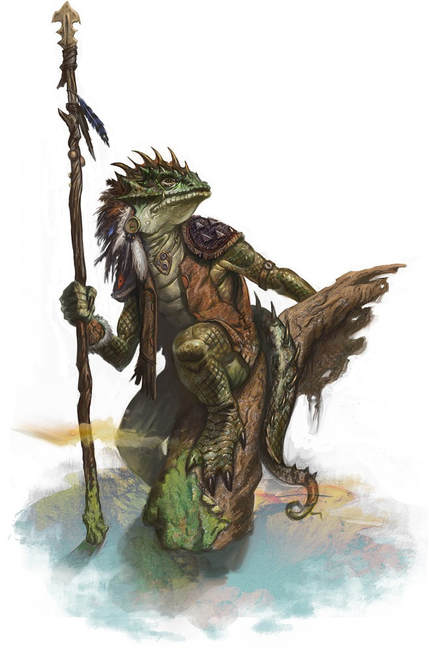 The room was smoky with the fires of a comfortable longhouse, “Don’t tell me you think shamblers suck that much, have you ever encountered a troglodyte?” I may have drunk too much by this point, but I was still coherent enough to argue. “I got news for you,” I slurred, “There are creatures out there far more terrifying than a plant that eats people.” Slamming my empty mug on the table, I continued, “Before you ask me, let me just spell it out…” 1) They Stink! You think Shamblers are bad? At least you can get close to them; troglodytes on the other hand have an organ that releases an odor that is so foul that it's hard to be within 30 feet of them, let alone actually hit them. The smell is reminiscent of rose boiled cabbage and mild skunk, and it’s enough to put you on your rump! The first time I encountered them, I barely escaped without taking a nap. So yeah; If you ever bump into a group of Troglodytes, have fun not breathing. The odor is extremely hard to wash off, even if you do manage to survive. I had to throw away a brand new suit of armor I was wearing that day because I just couldn’t handle smelling so bad that even beggar’s plugged their noses at me. Next time you’re travelling and you think you smell troglodytes, be prepared to leave because you are going in the wrong direction, because... 2) They’re From The Scariest Place Troglodytes come from the most dangerous place I know: The Underdark. All manner of crazy creatures exist down in that hellscape, and troglodytes are usually a good warning sign that you’re getting too close. Somehow troglodytes have managed to survive so close to that environment despite the fact that they’re the lowest on the food chain. Here is my theory on why: The combination of darkvision and chameleon skin allows them to see in their environment and blend in with their surroundings at the same time. Troglodytes can approach their prey while being invisible, even if you can smell them. Troglodytes are the start of your descent into the Underdark, and boy are, they scary. The problem with this is that there are far more terrifying creatures down there. Despite being on the bottom, troglodytes go on... 3) The Boldest Raids I've never seen this but if the hearsay is to be believed, Troglodytes go on raids in search for shiny metals. They just go from settlement to settlement in the Underdark, to steal from creatures stronger than them! This is probably due to the fact that they follow the god Laogzed; a massive toad-lizard that sleeps in the Abyss, wanting nothing but for his troglodytes to be as fat and content as he is. I mean a very devout following, to the point of killing each other for food and riches without regard for much else. Yea, shamblers murder everything, but they don’t carry the ambition of some Toad God who wants you to be a glutton like him. Troglodytes form tribes to achieve their personal aspirations, as a way to please Laogzed. Sometimes their ambition leads to the tribe being torn apart over something as simple as a longsword. Just like noble-born adolescents fighting over music taste, troglodytes will go to the extreme in swaying belief. Tribes are created by this sort of mentality. The multiple tribes are constantly at war with each other for leadership. If you’re unfortunate enough to be a troglodyte leader, you better make sure that Laogzed sees you as worthy. Otherwise, you’ll most likely become food or game to chase. Just like we don’t make waste of a deer that we hunt for sport... 4) They Will Eat Anything With Meat Including Each Other! I don’t really like delving into cannibalism because I witnessed it once, but this has to be the scariest thing about troglodytes. They will eat anything with meat on it; it doesn't matter if it’s alive or not, and it definitely doesn't matter if its a troglodyte. Despite their tendencies, they love humanoid flesh. Not only is this bad news for me, but for all of the people that like to adventure these days. The whole sociological structure of troglodytes is based on procuring food and riches. When you only have two necessities in life; morality is something that gets thrown out the window, so much so that the population takes pleasure in hunting intelligent creatures who are “weaker” than them. This is the mentality of the troglodyte. As you can see, you may have had bad experiences with shamblers, but the troglodytes are no joke. They have a biological defense that prevents you from getting close to them. They are from the Underdark, and I don’t think I have to tell you (a second time) how bad that place is. They have zero fear when it comes to food and plunder. Cannibalism is a tenet of trog life; do I need to reiterate? At this point, the empty mugs in front of me were beginning to smell like something resembling a troglodyte; or maybe that was my vivid imagination. After realizing the one in my hand was also empty, I asked for another. I looked over to the man who got me all riled up in the first place. He had one empty mug and a devilish smile on his face. I knew I was in for it; for a second, I hoped he didn’t understand a single word I said. Laughing, I asked, “What’re you smiling about? You really do think shamblers are worse? Go on, prove it!” I said boisterously. I crossed my arms with a smug expression and waited for his reply. Benjamin Witunsky, artist, writer and nerd savant. Cofounder of the NerdMantle Podcast available on Soundcloud, Itunes and Google Play Music. Photo credit: Terminally Incoherent 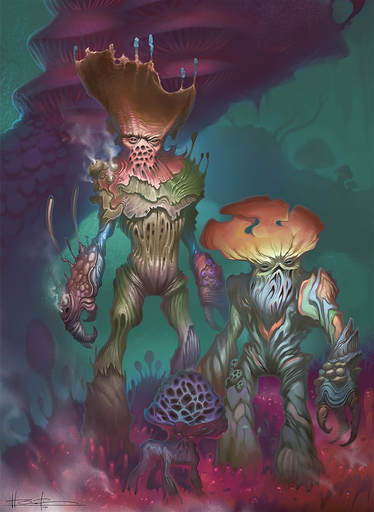 Dungeons and Dragons is littered with dungeons containing enemy encounters. Some of these dungeons may contain the titular dragons; however,most parties start at lower levels and end up facing the same type of enemy over and over again. Orcs, goblins, skeletons, and zombies make the flavour for the majority of new adventurers. Ultimately this flavour is becoming a bit, dare we say, vanilla. It’s monster month at High Level Games so here are three enemy ideas to spice up a campaign. These enemies are all structured as a leader of their respective encounter. A good leader is nothing without their number two, so each enemy also has their second in command to optionally add to each encounter as well. 1) The Mushroom Men in the Bog An interesting idea to throw at players is that they sometimes may be hired to eliminate monsters that aren’t necessarily evil. The mushroom men in the bog could be an encounter to exercise it. The citizens fear these fungal headed monstrosities that live in the swamp outside of the city, and who better to rid this problem than a group of intrepid adventurers? The party can muck their way through the swamp and confront their quarry only to find that, although the creatures look fearsome and strange, they are actually quite peaceful humanoid creatures. The inspiration for this encounter are the myconids, a humanoid group of fungi that live in the Underdark. They deplore violence and will gladly treat peacefully with individuals in kind. When the players discover that their enemy is this peaceful and diplomatic it goes against the tropes that they come to expect. An unexpected situation leads to spontaneous roleplaying decisions, which often lead to memorable moments to be talked about. This particular group of mushroom men are lead by a myconid sovereign, a lawful neutral creature with a challenge rating of two. Myconids gather in circles which are usually twenty or more of their kind. A sovereign is able to bring any large or smaller creature back to life and animate them as a fungal creature called a Spore Servant. A fitting second in command could be a shaman that leads this spore-servant army. The sovereign will be interested in treating with the players, while the shaman may be a bit more interested in feeding the players to her fungal crocodile army. The retinue of mushroom-y crocodiles could also provide engaging enemy encounters for players as they make their way to the myconid civilization. 2) The Ghost On The Spooky House on the Hill When a party first arrives in a town they inevitably check out the tavern for drink, fun, and quests. It’s very easy for a dungeon master to put an abandoned, secluded house in the town and build an encounter out of it. The townsfolk all steer clear of the ominous house that overlooks the moors, but the adventuring group is drawn to the story of the person in white that haunts the house. An innkeeper can share the building’s folklore with the party and the premise of the encounter builds itself. The ghost inside the small house is a banshee, a woeful spirit formed out of spite, forever bound to the place of their demise. A banshee has a challenge rating of four, making it a medium difficulty encounter for four level four heroes. Their ability to detect life and move through walls can provide an interesting combat beyond standing still and exchanging blows. The Horrifying Visage and Wail abilities also add some horror to a fight with banshees. A dungeon master could keep this classic ghost story structure as an encounter of its own, but there’s an opportunity to surprise players in a way they’d never expect. The second in command isn’t really a second in command at all. What if, instead of one ghost, there were two within the house, and they weren’t hostile towards the players but rather were hostile towards one another? Unbeknownst to the players, they venture into the house right as the haunted couple is in the midst of a lovers’ quarrel. They’re throwing objects at one another and screaming all their frustrations out for the entire world to hear. Unfortunately a banshee’s scream isn’t something humanoids enjoy hearing. The players will now have a choice to intervene in the form of combat or as marriage counsellors. 3) The Mighty Morphin’ Giant Rangers Let’s preface this suggestion by saying an idea like this won’t resonate in a serious campaign. For a session doesn’t take itself too seriously, the Mighty Morphin’ Giant Rangers are a perfect fit. In Dungeons and Dragons there are six types of giants: hill, fire, stone, frost, cloud, and storm. If we stick to the book, giants of different races don’t coexist in similar habitats; putting them together is both unbelievable and silly. However, that shouldn’t stop the potential fun that this idea could provide an adventuring party. Due to its ridiculous nature, an idea such as this needs a ridiculous setup. Outside of a large city, a sacred temple sits atop a small mountain. Recently this temple has been taken over by a rebellious group of giants who have decided to use this temple as their base of operations. Many heroes have tried to take back the temple and failed, but now it falls onto the shoulders of this party. Will they be able to defeat this unlikely collection of giants? The challenge rating of these giants vary and some of them are quite high. The lowest is the hill giant with a challenge rating of five. The highest is the storm giant with a daunting challenge rating of thirteen. A higher leveled party is recommended for this kind of encounter. Furthermore due to the silly feeling players should be rewarded for more out of the box thinking. Players should be able to deal with these giants diplomatically if handled correctly, and each giant should have their own unique personality (and maybe for good measure: a unique costume). The storm giant seems as if they would be the best final encounter for this campaign. The cloud and fire giants are both good candidates for the second in command, but the mood to this encounter has ample room for a rigid power structure to be thrown out the window. Players could meet the enemy’s camp with even more camp. Another line to follow is the players can find enough pieces to build their own ‘giant’ and battle these beasts on an even height. This encounter might have enough humorous hooks be its own adventure with some more planning. There are many unique monsters hiding in the 5e Monster Manual. Randomly flipping the book open to select something and make it fit in the situation can add memorability to a campaign more than a skeleton or brutish, green-skinned humanoid could ever provide. Messing with the stats and lore for a monster can also provide a few fun twists that a group isn’t expecting. When planning an adventure a dungeon master can add their own flavour to a world, and they can be creative with the monsters they put into their story. Just because Orcs running a city’s bank in D&D seems ridiculous it doesn’t mean a dungeon master can’t make it work. Experimentation breeds creativity, the most fundamental resource in Dungeons and Dragons; a resource we all have a ravenous hunger for. Justin Cauti is a writer and Twitch streamer. He plays board/roleplaying games on the internet at http://www.playingboardgames.tv. Follow him on Twitter for updates on his boring life and writing projects @LeftSideJustin. Image Source: Forgotten Realms Wiki Myconid  This is Leyshon Campbell. Before I give you some totally free content, including shortcuts to some of the finest game materials ever made, I want to thank High Level Games for dragging me back into a hobby that I love. They are truly a Makerspace for game designers, and they deserve support. If you see the value here like I do, check out our Patreon, or pick up one of our excellent products. Lycanthropy in Ravenloft is intended to be a curse rather than a blessing, but it's a curse that is notoriously hard to lift. According to the official guide to the subject, once the progenitor is dead, there’s a ritual involving a number of high level spells cast on the afflicted person in their beast form, with saving throw penalties reflective of how deeply the beast has taken hold. If the afflicted doesn’t have the means yet to kill the progenitor, obtain the spells or make the saves, their life becomes a matter of managing the dread disease. Here are a few suggestions to make that easier. 1. Get Informed Do you change with the phases of the moon, or the tides? What about violence, hunger or the smell of blood? Use redundancies, such as manacles inside a locked and barred room. Not only is this safer, but it will give you a rough idea of how strong it is by what doesn’t work. Read up on cheap STR/DEX poisons, such as whiteshoot root. The worst they can do is paralyze, and they can make other precautions more effective. Learn about the laws wherever you go, especially smaller offenses that warrant jail time. Getting thrown in jail for unpaid fines may prevent manslaughter. If anyone knows of your condition, they may lock you up longer than you intend, but that’s still more manageable than running free. 2. Get Help Many champions of the Mists are familiar with precautions against lycanthropy, but some are more helpful than others. George Weathermay may take pity, especially if he sees a connection to his nieces. Ivan Dragonov might be convinced to assist in hunting down the progenitor, with strict warnings as to what will happen if they delay in a cure. Carnagan Wolfe may not know about being infected, but might share some insight of his life on the fringes of werewolf society. And an infected lycanthrope in truly dire straits might learn a lot from Vjorn Horstman, even if they have to escape his lab after learning it. 3. Get Magic Finding a relic like the Hands of the Dawn Healer might be a bigger quest than getting cured, but it’s certainly worth following up on rumors, especially if you’ve hit a dead end on your bloodline. Anyone wearing a Wolfspaw Amulet can trap the beast in any corner, alcove or pit on very short notice. Some shared party items like magic manacles, a bag of holding or portable hole could keep the beast in check for a few days and then turned to other uses the rest of the month. A Silver Amulet of the Beast is a comprehensive solution, but it’s not a shared item, and may work best financed through a sponsor or on temporary loan from an ally. Finally, if you start to transform, buy yourself a little time by drinking a spiritual purgative. It may only hold off the curse a few rounds or minutes, but that may be enough time to get someplace more secure. 4. Get Hunting Even if you don't have all the ingredients for a cure, tracking down the progenitor is a great way to gain needed experience. If you were lucky enough to be infected by a true lycanthrope, this means only one hunt, but occasionally it means tracing back through any number of infected to find the original. As Celia Whitmoor and her companion Argent can tell you, the danger and logistical difficulty of a long bloodline hunt belie the fact that this is an emotionally grueling journey, with any number of false ends where you find not the object of your quest, but another hapless reflection of what you are turning into. It may be best to lay out some rules for how long you will hunt, and how much you will tolerate, until you decide to try for control instead of cure. 5. Get Control Taking control of the beast is no easy choice; even attempting will make it more difficult to be cured in the future, and success will prevent it entirely. Van Richten’s Guide had no rules for it, but John W. Mangrum wrote up some pretty good rules in the Book of Shadows (“Wild at Heart”). The Duskpeace Outcasts are the obvious ones to turn to for this kind of help, but the Keepers of the Black Feather might offer some small assistance to other kinds of werebeasts, if you’ve proven yourself a worthy ally. BONUS: Get Re-infected As a third option against control or cure, some might consider re-infection. Only the most recent phenotype takes effect, so why not replace your slavering wolf with a more fastidious panther, or less hungry rat? The ideal might be to join a flock of wereravens, but there are also outlander varieties of tigers, bears or boars whose beast-selves are not evil. It’s up to the DM how a “reboot” against a different phenotype interacts with ranks in control shape. Managing an afflicted PC requires a tricky balance; if lycanthropy is too easy to lift then it loses its gravitas, but it shouldn’t be so harsh as to make the PC unplayable or derail the rest of the campaign. By making plans and taking precautions, you can make lycanthropy an ever-present part of the life of a character while still allowing them to have as productive a life as an adventurer in Ravenloft can have. Leyshon Campbell has been playing and writing for Ravenloft for over twenty years, from the Kargatane's Book of S series, playtesting D&D 3E in a Ravenloft campaign, to the ill-fated Masque of the Jade Horror. He married his wife on Friday the 13th after proposing to her on Halloween. By tradition, the first story read at birth to each of their three children was The Barker’s Tour, from Ravenloft’s “Carnival” supplement. He is currently running the “Queen of Orphans” Ravenloft campaign on Discord. 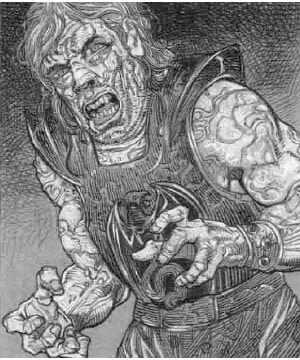 Hey, Jim here! Before Frankie gets started, I wanted to remind you that High Level Games is bringing you game content and commentary absolutely free, as well as providing a home and launching point for a slew of great creators! If you want to help our endeavors, we'd love it if you stopped by our Patreon to show your support. Of course, if you'd like a little something for your hard earned money, you could always pick up one of our fine game products as well. Greetings traveler! I’m sorry to hear about your loss. I understand one of your companions went missing in Lamordia, and you believe the shadowy Adam to be responsible. I was relieved to receive your letter asking for my advice on how to proceed; I had begun to worry you no longer had need of me! Fortunately for you, I’ve dealt with Adam (as well as his deranged creator) personally. Since encountering Adam, I’ve tangled with other creatures of his ilk, and discerned several common threads between them. 1) The Difference In other lands, the ability to animate the inanimate is a function of powerful magic and expert application. Within the Mists, however, the power to bestow quasi-life to one's creations comes more easily (if not as reliably). Although the techniques vary wildly, they all require a creator to spend an inordinate amount of time, attention, and money in the pursuit of their creation. A great deal of information about the varieties of golem creation can be found in Van Richten's seminal (if unoriginally named) Van Richten's Guide to the Created. What the good doctor fails to note is the distinction between ‘mundane’ constructs, the mindless automata that follow only the directions of their creators, and the malignant intelligence of those constructs touched (some might say tainted) by the Dark Powers. Van Richten’s successors, the Weathermay twins, have dubbed the more dangerous variety dread golems. While the rules were written with 2e in mind, the lore, background, and cost guidelines in Van Richten's Guide are suitable for any edition. Rules for dread golems can be found on p. 190 of the Ravenloft Core Rulebook. 2) The Obsession What a sufficiently motivated creator lacks in magical potential, the Dark Powers may sometimes fill in. What seems to attract their attention in this regard is obsession: the desire to finish their work at the expense of everything else. Bringing their creation to life may not even be their literal intent. Consider Ernst Bederim: an acolyte at the Great Cathedral in Levkarest and a bright young artist who worked exclusively in portraits of leaded glass. His magnum opus was to be a portrait of Ezra to rival the centerpiece of Sainte Mere de Larmes. His passion led him to neglect his duties to the faith (at least one brother suffered grievous injuries restoring a fresco that Ernst was supposed to have done), and eventually he went missing altogether. He was found sliced to pieces a few weeks later, but his nearly-completed masterpiece has not been seen since. The animation of this art piece into a Dread Golem (for that is what I believe transpired) was not born of a literal desire to bring life, only a figurative desire, to make his artwork "come alive" as it were, a desire which the Dark Powers saw fit to grant. If the glass portrait of Ezra truly does stalk the Great Cathedral, then statistics for stained-glass golems can be found in the Monster Manual II. 3) The Connection The power to create life is the province of the gods alone, and mankind has but a single way to achieve this end: the way the gods intended. The magically potent and driven may attempt to usurp this power, but their creations, from the basest homunculus to the most powerful golem, remain a part of them in a potent and fundamental way. I believe that the soul of the creation is a piece of the creator's own soul, a fragment they have torn loose with their perverse obsession and imparted in the construct, like a cutting taken from a tree. Consider Adam: his own creator, Dr. Mordenheim, and he suffer an intense shared connection. Prick one, and the other feels the needle. (But be warned: I know from experience that neither can perish whilst the other endures.) Adam is even widely believed (by those who know of such things) to be Lamordia's Dark Lord. So why does his domain, and his alone, not reflect his own history and psyche? The answer is that he is not, no matter what he might think, an independent creature: he is merely an extension of Mordenheim's own soul. This is why Lamordia is modeled after Mordenheim's influence, and not Adam's. Frankie may be correct here: if Adam and Mordenheim truly are one soul, it would make their dual curses make sense. Both are chief among the damned in Lamordia, and while Mordenheim's influence predominates, only Adam wields the supernatural prowess of the Dark Lord. For more information about Lamordia and its environs, see the Ravenloft Gazetteer: Vol. II. 4) The Imperfect Some powers are not for humankind to possess, a lesson the dread golems' half-lives bring resoundingly home. Each of these creatures possesses a number of tiny flaws, which Van Richten dubs zeitgeibers, as if to underscore their creators' inability to impart real life. I encountered a jeweler in Hazlan once, a Rashemi woman purported to have the occasional prophetic dream. She made such wonderful trinkets from crystal, etched in the shapes of animals both real and mystical. When the Mulan noble she served became pregnant, the artist worked night and day fashioning a delicate crystalline fairy to watch over the child, for she had sensed a great darkness that wished the Mulan harm. The noblewoman miscarried, and when she discovered what her servant had been making, she cursed the artist for her superstition and had her hanged. The crystalline fairy did not take this affront lightly: before departing into the night, she killed every Mulan child in the household. To this day, the crystal fairy is incapable of passing a sleeping person without doing them an ill turn, which may be as innocuous as stealing an article of clothing, or as vicious as cold blooded murder. The crystal fairy has been sighted all across the core, often posing as a mundane piece of jewelry or statuary. Details on crystal golems can be found in Denizens of Darkness. 5) The Malevolent While some dread golems, like the crystal fairy, are born shortly before their creator's demise, virtually all of those that are not eventually attempt to destroy their creator. Some may attempt to do so out of a perverse mockery of love, desiring to possess their beloved even at the cost of the creator's life, but most grow to despise their 'parent.' Some profess anger at having been made for servitude, some outrage at being created imperfectly. Some, like Adam, cite personal conflicts that exploded into a lifetime of treacheries. I believe that the truth is that the same part of the creator's soul which animates the golem is the part of themselves that know what they have done is wrong, and that they deserve to be punished for it. The act of creation purges them of this part of themselves, and the Dark Powers give it the ability to act on its dark desires. For such creatures and their creators, life takes on one of two forms: either the creator (or sometimes, much more rarely, the creature) flees, while the other pursues them with the same relentless obsession that brought about the golem's unnatural existence in the first place, or else (like Dr. Mordenheim) the creator proves too powerful or influential for the construct to easily destroy, and they lurk on the fringes of their creator's territory, plotting elaborate vengeance. Adam's Wrath is only one of the Dark Lord of Lamordia's elaborate revenge schemes. Check it or the Gazetteer II for more possible ways for Adam to involve the PCs in his vengeful war against the mad doctor who created him. Conclusion If you take only a single piece of advice from me regarding your plan to rescue your companion from Adam's clutches, it is this: don't. My own brush with Adam and Dr. Mordenheim cost me a lung, the life of my sister, and the soul of a dear friend, and I consider myself to have gotten away lightly. In the best of scenarios, your friend is already dead. At worst, they are irrevocably...altered. However, I know you well enough to know you're unlikely to heed my warnings. You'll risk your life for that of your companion's no matter what I say, so as your (distant) friend and occasional mentor, I offer you this additional bit of wisdom: Trust Adam not at all. Trust Mordenheim less. Good luck, and happy hunting. Frankie Drakeson, Lord Mayor of Carinford-Halldon Frankie Drakeson is a retired rifleman and the current mayor of Carinford-Halldon in Mordent. He is married to Gwendolyn Drakeson, the granddaughter of Nathan Timothy. Jim Stearns is a deranged hermit from the swamps of Southern Illinois. In addition to writing for the Black Library, he puts pen to paper for High Level Games and Quoth the Raven. His mad scribblings can frequently be found in anthologies like Fitting In or Selfies from the End of the World, by Mad Scientist Journal. Follow him on Twitter @jcstearnswriter, or listen to Don, Jon, & Dragons, his podcast. Picture Reference: http://www.lomion.de/cmm/golervfl.php  The Ravenloft game offers some ways to live with lycanthropy, but some players don’t need much encouragement. It gives them better combat ability, which is the reason they are an adventurer anyway, right? Sometimes players need a reminder that something that tries to kill everyone you love is a bad thing. If your infected PC is trying to talk the others out of a cure, here's how to write them a reality check. 1) No More Murder Hobo Because lycanthropy keeps the “victim” alive while threatening people they care about, the severity of the curse is a reflection of how much they have to lose. Those who are most tempted by lycanthropy tend to be rootless, living only for the next adventure. Give them roots: the bartender who gives them leads, the kids who admire them, the cleric who patches them up. Consider a big adventure that gives them a cool base of operations, complete with a couple of loyal staff. Once they have something to lose, the curse takes its proper perspective. 2) Dangle Mistletoe One special type of community tie bears special mention. Have an NPC show interest in the PC by sending little gifts or calling in favors to make a job easier. If the player takes the bait and the relationship starts heating up, remind them that the beast will target their love interest. Make sure the NPC is playing hard enough to get that there’s lots promised and nothing delivered… yet. Even the most juvenile player should be moved to get rid of this barrier to romantic entanglements off-screen. 3) Share The Pain Make sure the other party members are on the front lines when it comes to every kind of collateral damage. A party that is sick of mending the furniture is your best ally for dealing with a lycanthrope-happy player. Remind players that infected characters may have a harder time gaining XP, and infected paladins, clerics, druids and rangers could lose much more. In the rare situation that everyone still lines up for infection, make it clear that their beastly selves will destroy the group, either by going separate ways or just killing each other. 4) Wake-Up Calls If you think a hangover is bad, how about waking up a murderer? Make a small table of random places the PC might wake up after a night as the beast. In a jail cell. Naked in the woods. In an animal cage. On a lab table. Lost in a subterranean cave. Even just waking up a few days north of the rest of the party could ruin a lot of adventuring plans. It's OK to let them see the table so they know what might happen, even let them make suggestions, but don't let them see you roll, and don’t just announce what the results are. Some things are best found out the hard way. 5) Fools Rush In Lycanthropes target people that their host feels strongly about, and there are plenty of other strong feelings beyond love or friendship. If the infected PC feels strong hatred against the villain of the story line, have the beast go for a direct attack, rushing in with all of the rage felt by the host, but without the reasoning to actually do the job. It might do a lot of damage and take out several lackeys, but infected survivors could pose a greater threat to the party. After the PC wakes up as a prisoner in the villain's lair, offer a temporary replacement character. By the time the original has been rescued, the player will hopefully have learned the lesson, and will be first in line for a cure. Other media may be full of heroic werewolves, but the specifics of each mythology have to be taken into account, and Ravenloft lycanthropes are not those of Hollywood. Unless you’ve agreed to loosen the rules for them, lycanthropy should not be an enhancement to the character. It should be a disaster waiting to happen that they will work hard to be rid of, and count themselves blessed when finally free. Leyshon Campbell has been playing and writing for Ravenloft for over twenty years, from the Kargatane's Book of S series, playtesting D&D 3E in a Ravenloft campaign, to the ill-fated Masque of the Jade Horror. He married his wife on Friday the 13th after proposing to her on Halloween. By tradition, the first story read at birth to each of their three children was The Barker’s Tour, from Ravenloft’s “Carnival” supplement. Picture Reference: http://otherworldmystery.com/werewolves-arent-real 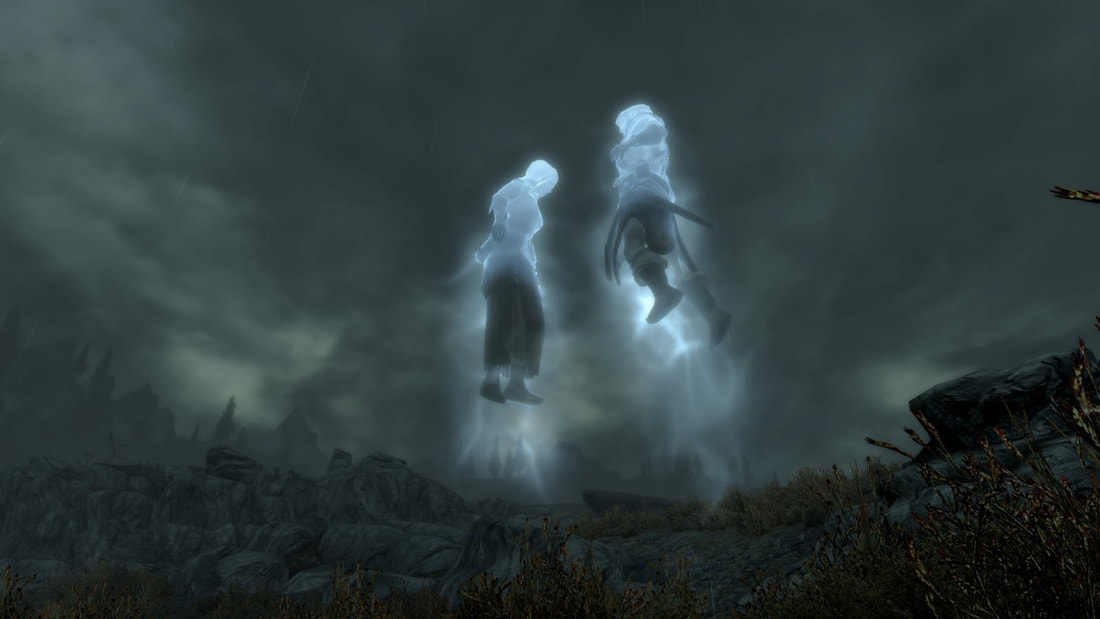 Greetings, travelers! Spring approaches and love is in the air. It seems like every civilization I hear of, from the dour Mordentish to the most bizarre of outlander cultures, celebrates a holiday around this time of year focused around romance, whether of the noble and sophisticated type or of the more…fleshly variety. While sharing a candlelit dinner with the Lady Drakeson, it occurred to me that we often consider love to be the sole province of goodness, the ultimate indicator of a soul’s purity. Tragically, this isn’t the case. The blackest of hearts can occasionally find another that beats in unison with their own, and woe to any that cross their path. Such villainous paramours feed on one another, becoming in tandem a far greater threat than the sum of their individual iniquity. Should you desire to investigate any of these forbidden romances, I would tread with extreme caution. Creatures who have only one bright light in a life filled with darkness are given to protecting it, and monsters such as these are not known for their restraint. There are a few such affairs that I’m familiar with throughout the world; most of them come to my attention as the likely cause of the death of a correspondent such as yourself! 1) The Doomed Lovers Travelers along the road to Valachan occasionally encounter the specter of a woman some distance off the road, vaguely discernible and in great distress. Those kind-hearted and foolish enough to investigate rarely return. I believe this apparition to be the departed soul of Lizibet Moore, who fled her home to wed a rakish Dementlieuse actor. Conventional wisdom claims he either abandoned her in the moor, or killed her himself. Moved by this story, I attempted to lay her to rest myself in my youth, a mistake which nearly cost me my life. You see, Romero, her paramour, did not abandon her: he simply could not navigate the treacherous Mordentish swamps, and drowned in the bog. His love, upon finding his remains, killed herself in sorrow. Shunned by their own families, their love denied by the very ground beneath their feet, the two found in death the union they were denied in life: Lizibet now roams the moor in ghostly fashion, luring victims to her lover. His own form preserved by the bog, Romero projects upon his victims the terror he felt as the black mud filled his lungs, damning even those who escape him a slow, lingering demise from his cursed touch. The two lash out at any living being that comes within their domain. Those who do not freeze in terror at the sight of Romero find themselves split further, as Lizibet attempts to possess those most capable of harming her lover. They’ve amassed a small fortune in stolen treasures by now, which they believe will finance the bright future that they don’t seem to realize they can no longer attain. Lizibet is a 5th level rogue as well as a ghost with the Malevolence and Corrupting Touch abilities. Romero uses the statistics for a mummy. 2) The Singers Speaking of dangers to travelers, should you find yourself along the coast of Dementlieu, for the love of Ezra, plug your ears! The first strains of singing you hear may likely be your last. A tiny, lush island off the coast of Dementlieu, too small to even have a name, is the home for a woman who lures travelers to their deaths, although stories vary as to her identity. Some give her wings and clawed feet, and call her Cymone, citing the rocky island as her nest. Others claim she dwells in the tidal pools and drinks the blood of travelers, and name her Cold Brigitte. Aslaug de la Plage, the keeper of the lighthouse, dismisses these stories as superstitious nonsense. In reality, there is not one monster, but three: Cymone is a harpy, Cold Brigitte is a watery fae known as a glaistig, and even the lighthouse keeper who protects their secret, Aslaug, is herself a sirine. The three are not merely compatriots, but lovers, but those who think to join them are in for a rude surprise, as the lovers feast on their prey: Aslaug devours their minds, Cold Brigitte drains their lifeblood, and Cymone gorges on their bodies. The overlapping effect of not one but three songs of enchantment is usually enough to incapacitate entire groups of heroes. Should that fail to work, Cymone can always take to the air while Aslaug and Brigitte retreat to the safety of deeper waters (potentially luring an enchanted captive or two to their own drownings as well). It would take a dedicated group of adventurers indeed to dispatch this wicked love triangle! Sirine statistics can be found in the Monster Manual II. Glaistig statistics can be found in the Monster Manual III. 3) The Artists In the past decade or so, the works of a singular artist have begun to spread across the eastern core. A sculptor who works in marble, this mysterious artist is like none before him: rendering in stone the tiniest details, so fine as to be unbelievable, his figures so lifelike that one could swear they could spring to life. A small brass plate bearing a serpentine insignia, usually on the breast or the center of the back, marks each statue as his. This dark work is the result of a medusa named Mukondi, who claims to hail from a land she only calls ‘the Shaar.’ She was an isolated threat, living alone on the plains near the border of Darkon and Nova Vaasa, before a chance encounter with a shipwreck survivor named Phidian, a maedar. If you’re unfamiliar, a maedar is the extremely rare male form of the medusa. Immune to the gaze attacks of their female peers, maedars instead have the ability to restore petrification victims (which they rarely do). The pair now practice an extortion scheme, kidnapping the loved ones of the wealthy and powerful, then demanding exorbitant ransoms to return them. Should any of their victims fail to pay, then there is soon a new statue on the market. (Phidian drills out the hearts of these statues, which he replaces with the brass plug that is their signature, thus preventing anyone from returning Mukondi’s victims to life.) I believe Azalin is aware of their presence, but since they confine their depredations to Nova Vaasans (or those that are not his citizens), the lich’s forces do not confront them. Statistics for maedar can be found in Dragon Magazine #355. 4) The Outcasts Dazin Cade was an accomplished illusionist, and a renowned adventurer. Like many heroes before him, he chose to brave Castle Ravenloft. The bones of his companions lie moldering in Strahd’s flooded dungeons, but Cade himself was given the curse of vampiric immortality, and was put to work in his new lord’s service. In some forgotten volume of arcane lore, Dazin stumbled across a mention of the Cult of the Nightfoe, and was immediately entranced. The defunct religion venerated a nameless destructor figure of ethereal beauty and incredible danger. Although his research indicated that Strahd’s forces had destroyed them all centuries ago, he became fixated on the cult, determined to locate its remnants. In a hidden shrine in the Balinoks, north of the Luna River, he found what he was looking for. None of the priestly sacraments remained, but the dark visions he received as he slumbered told him he had found what he was looking for. He fashioned a new image of his deity: an icon forged from an obsidian-black metal, so cold as to sap the life from any foolish enough to touch it. So great was his devotion that the Nightfoe has given life, or a cruel semblance of it, to this statue. Dazin Cade and the statue he has named Nightbane dwell now as both lovers and co-conspirators. They have even begun abducting those who wander too far into the mountains and cursing them with undeath, raising a new cult of vampiric spawn to worship at the Nightfoe’s feet. Even without their underlings, Cade and the Nightbane are a terrifying combination. Dazin specializes in spells of light and shadow, which seem to energize his lover in an arcane way. The Nightbane may never speak, but it can certainly act, and it does so by emulating the god whose image it was created in, in his role as a destructor. He can even send out cascades of necromantic energy that peel the spirits away from the living to reinvigorate his vampiric partner. Should the two grow much larger in power or influence, they may be forced to relocate, or else deal with the forces of Barovia’s monarch, who is unlikely to view the presence of a rival with good humor. Dazin Cade is a human vampire, and a 9th level illusionist. Nightbane uses the statistics of a shadesteel golem (Monster Manual III), but with an Intelligence of 18. 5) The Duet Many travelers have seen Zidora and Seoci. Although the two range all over the Core, they usually stay near Kartakass, where their abilities are most appreciated. They actually have a reputation as folk heroes, although this is far from the case. In reality, the pair are brigands and murderers, who spin elaborate tales of their victims’ monstrosity after the fact. They use the guise of a pair of adventurers as a cover to rob the defenseless and evade the law. Zidora is half-Vistani, an image she sometimes accentuates to add to her exoticism, if she thinks that would be to her advantage. She is a skilled at dancing, singing, and several instruments. Her lover, the Tepestani Seoci, is a tall, powerful man with long hair and a perpetual shifty grin. His skill is far more specialized, limited to the violin and a vast store of ribald songs and off-color jokes. Seoci possesses a magical violin that makes him particularly dangerous. It entrances its victims, and makes them more susceptible to musical attacks. Conveniently, Zidora is a gifted sorceress, specialized in just such attacks. Eventually, these two will run afoul of the wrong prey, but until then they live fast and carefree, lost in their own self-destructive romance. Zidora is a 9th level sorceress specializing in sonic attacks. Seoci is a 9th level bard with a violin that functions identically to Pipes of Pain. Conclusion Love may not be the soul province of the goodly, but it is undeniably good. The presence of such bonds of true love within the most wicked of beings points to their core of humanity; it offers the hope that even the most sinful among us might be saved, or at least be offered a taste of salvation among our own self-inflicted damnation. Take care, should you engage any of these beings. I have considered hunting some of them, but then I think of the lengths I might go to in order to protect Gwen, or she to protect me, and I inevitably decide that such dangerous hunts might be better left to the younger and more vigorous. As always, safe travels and happy hunting, Frankie ‘Farshot’ Drakeson, Lord Mayor of Carinford-Halldon Jim Stearns is a deranged hermit from the swamps of Southern Illinois. In addition to writing for the Black Library, he puts pen to paper for High Level Games and Quoth the Raven. His mad scribblings can frequently be found in anthologies like Fitting In or Selfies from the End of the World, by Mad Scientist Journal. Follow him on Twitter @jcstearnswriter, or listen to Don, Jon, & Dragons, his podcast. Picture Reference: http://skyrimphotos.blogspot.com/2012/08/ghost-lovers.html Editor’s Note: Enjoy reading articles about your favorite hobby and engaging with fellow gamers? We do too, but hosting and producing our site isn’t free. Please consider visiting our Patreon page and supporting us at any amount. We put every dollar back into the site and its production, and your help has allowed us to have certain paid article months for our contributors (such as this month). Thank you for your continued readership and your support! Big Bad Evil Guys. They are the ultimate challenge for your players. They bend, break, or flatout ignore rules at will. I explored reddit and found a table of original demon lords. Upon discussing with their respective creators, I did up stat blocks to allow anyone to use them in their own campaign as the final boss for their players. All of these enemies are CR30; powerful enough to provide a solo challenge for a level 20 party on full resources. Of course, these haven’t been playtested in the flesh, so your mileage may vary. Feel free to make any changes you see fit to any of the enemies here when you run them in your own game. 1) Bronocalos - The Demon Lord Of Warped Bones And Emaciation Creator: u/south2012 He causes crippled and sickly babies to be born, and for people to grow hunchbacked, and limbs to atrophy. Simply standing close to him begets weakness in all those around him. Bronocalos has access to powerful magic, including the ability to tear the skeleton straight out of a mortal’s body, and animate it to serve his own whim. 2) Cantus - The Demon Lord Of The Maddening Melody Creator: u/Jacknerik Cantus built his lair beneath a bards college, where he whispered his melody to all that studied there. The melody obsessed those who heard it, who dedicated themselves to spreading it as far as they could. This obsession either lead to those who heard it becoming thralls to Cantus, or to madness for those who tried to resist. The first huge challenge of Cantus is reaching him. His lair is a complex system of intricate design, populated with brainwashed thralls with powerful abilities. Cantus is the “man behind the curtain”, who lives behind his own reputation and followers. However, when he is eventually confronted, he is more than a match for even the most powerful heroes. 3) Sergorius - The Demonic Orc Lord Creator: u/DragonBolt101 Sergorius lives only to destroy everything in his path. The more destruction, the better! As chaos unfolds around him, his powers increase, building adrenaline from this destructive energy. As he gets more and more riled up, he increases in both size and strength. Legends say that blade and spear can never strike the final blow against him. 4) Bazim Gorag - The Primordial Demon Lord Of Chaos And Chance This big bad evil guy is actually not an original one, but doesn’t have scores of history for himself. I took him in a slightly different direction to his existence in the traditional D&D setting, and gave him some overpowered stats and abilities to boot! Bazim Gorag is a Primordial Demon, Lord of Luck, Chance, Chaos, and Gambling. He is a mutual ally of Orcus, and together they want to bring down The Raven Queen, so that Orcus can rule her death domain, and Bazim can inherit her fate domain. Building an appropriate challenge for high-level characters is always a difficult task! How many of your campaigns have reached 20th level? What kind of end-game bosses have you been throwing at your party? And who’s your favourite Big Bad Evil Guy of them all?
Peter is an avid dungeon master, role-player, and story teller. When he's not running homebrew campaigns, he is creating new worlds, or he is reading and writing fantasy stories, forever immersing himself in the gaping black-hole known as the fantasy genre. 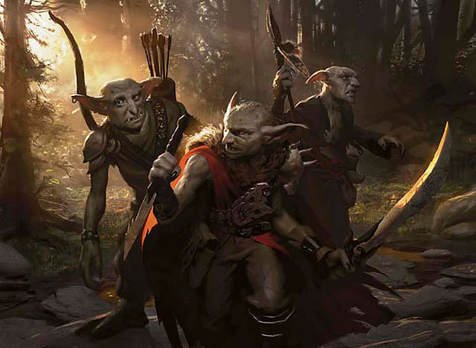 I mean, er… 6 Horrifying ways to improve goblin fights! Look, give me a break. I don’t have anything spooky this week. Bear with me this month and I promise your ol’ buddy Jim will have something sufficiently macabre for you next time. That being said: Goblin Fights! In case you missed it, Cecilia D’Anastasio with Kotaku wrote a insightful article this past week calling out one of the staples of the D&D game: the goblin fight. It immediately put my back up, because I love goblin fights. Then I read the article, and here’s the thing: she’s 100% right. If I’d played in the goblin fights she has (and I have, just not necessarily with goblins; usually orcs) I’d hate them too. I felt really bad for her that this has been her experience with goblins. For me though, goblin fights have always been a whirlwind of entertaining chaos, where you never know what’s going to happen. The ‘Chance’ space of D&D, if you like. So how have I seen people spice up the goblin fight to keep it from getting stale? So glad you asked. (Even if you didn’t ask, I’m going to tell you anyway.) 1) Retaliation! Goblins really only do two things well: suck and die. So you might as well capitalize on their strengths! A canny goblin chief will find it easy to get his warriors to carry something that will harm the enemy if they happen to get killed. After all, the goblins know they aren’t likely to survive more than a single hit, so it’s not like they’re putting themselves in that much more danger, and there’s nothing to assuage the insult of dying like causing some injury on your way out. Explodey vests are always fun (a vial or two of strategically placed alchemists fire works wonders). The goblin takes full damage, of course, but feel free to give the same damage with the dice stepped down a tier (d6 to d4 for example) to the bastard that hit him. Right on the same page are primitive biological weapons. Puffball mushrooms, yellow mold, or any other inhaled poison can easily be put into the same kind of vest (or worn on the head, say, under a bonnet of some type—adventurers love golf swinging goblins). A simple wet rag across the face is usually enough to prevent the gobs from inhaling their own weaponry, but most adventurers won’t be expecting it. Sticky shirts are another play on the same theme. Goblins covered in mimic glue, or giant slug mucus, can make themselves quite a nuisance! Anyone who strikes such a goblin should make a strength check or find their weapon stuck fast to the goblin. (A penalty of -2 to -4 per goblin is probably appropriate.) 2) It’s A Trap! It’s a misconception that goblins are stupid. In reality, they’re as smart as people (no, seriously, go check their stats). I can’t count the number of times I’ve seen a party nearly wiped out because the goblins they thought they were ambushing were actually ambushing them! Lure them in with a couple of chattering goblins, and while the PCs are distracted with their own murderous greed, spring the jump on them. Many goblin fights happen inside or underground. If the goblins are prepared for the attack, it’s only a matter of giving the right signal to plunge the area into total darkness. Most adventurers aren’t carrying their own light sources when they’re sneaking up on someone (makes sneaking somewhat difficult), so it’s easy to drop a couple weighted curtains in a passageway, douse any fire the gobs may have going, and with a single round of actions, the fight is now taking place in total darkness. Goblins are also little bitty guys. What that translates to in almost every version of the rules is a bonus to hiding. Goblins can fit into tiny cracks and crevices, and if they’re setting up an ambush can always take the time to take 20 on camouflaging themselves. When the barbarian charges in to slaughter the two goblin guards he thinks are unaware of his presence, nothing ruins his day like half a dozen attacks of opportunity from the goblins who were hiding in concealed positions along the way. Like all races, goblins have their champions. Fortunately, most adventurers are racists who assume every goblin is weak, cowardly, and stupid, so it’s pretty easy to trick them into getting too close. A goblin with a few levels of barbarian, fighter, ranger, or rogue can prove to be a nasty surprise for an overly cocky adventurer. 3) No, It’s REALLY A Trap! Goblins aren’t stupid, but they are desperate. It’s the fact that their evil leaders put the dumbest and most useless members of their tribe on the front lines that leads adventurers to think goblins as a species are basically just scaly rats. The same selfish leadership means that the majority of the race are poor, hungry, and willing to do anything to improve their lot in life. Fortunately, desperation can breed some diabolical ingenuity. Goblins have no problems evening the odds with a few homemade traps, the more low-tech and sadistic, the better. A iron bar, or a series of them, makes another simple trap. Set four to five feet off the floor, an iron bar makes no difference to the goblins, who can slip right under it with no trouble (goblins topping out around 3’8”), but that same set of bars is a huge obstacle to adventurers, slowing their movement to a crawl, hampering their attacks, and forcing them to fight the goblins in an environment that favors the little guy. The most destitute goblins can even use wooden poles in a pinch. Of course, the most sadistic goblins coat the horizontal poles in grease, glue, or poison, to further torment their attackers. One of the best options is the humble pit trap. Set in a dungeon or along a little used road, a 10-15’ pit trap can often take several key members of the party out of a fight. If the whole mob focuses their attacks on the adventurers still above ground, they can easily mop up any of the luckless sods who fell into the hole. Snake boards are a favorite trap for many smaller species. The idea is simple: take a rattlesnake, nail its tail to a board too heavy for it to move, then put the snake wherever you want. (In a shallow pool of water, a ditch, or some foliage are favorites.) 4) Say Hello To My Little Friend! Paladin mounts, familiars, druid companions: adventurers have a smorgasbord of domesticated animals as their partners in murderhobodom, so there’s no reason goblins shouldn’t get themselves a little piece of the same pie. Their relationship with worgs might be well documented, but that’s far from the only outside assistance they can get. Mimics and goblins make great friends. Since a large goblin tribe always has enough unlucky goblins to throw to the monster if it gets hungry, the mimic doesn’t mind sticking around to prey on the tribe’s enemies. (Get it…sticking around?) They can even help supply glue for the goblins, if they’re well compensated enough. Goblins work way better at range than the do in melee, but adventurers like to confound that by getting up in the goblins faces. One way to counteract that is to give them something else to worry about. Some goblin raiders like to huck a sack full of scorpions, snakes, or rabid animals into a camp before they start opening fire. Larger animals can be stampeded to a similar effect. Even the adventurer’s own horses can be scattered, allowing the goblins to split their focus. If the adventurers try to rally the horses, the goblins circle around and loot the camp; if they fight the goblins, the gobs retreat while a couple of them bring down a tasty horse in the darkness. Dummy treasure is a great way to get rid of or hamstring adventurers, and creepy crawlies can help with that. A chest full of gold with a poisonous viper sitting on top has killed many a thief. A locked door that needs to be battered down is a nuisance, but when a wasp nest has been built up on the other side, it becomes much more gruesome (and goblins employing such a trick will undoubtedly be wearing thick clothes to protect from stings). Some enterprising goblins have been known to collect discarded potion bottles and fill them with all kinds of foulness, usually sewage or offal but sometimes including parasites such as leeches or huge intestinal worms. 5) Turn It To 11 Most humanoids act out of a sense of reasonable caution and an understanding of consequence. Most goblins do not. With the exception of the very few wealthy, powerful goblins, most members of the species are broke, starving, and just desperate enough to do anything to alleviate the situation. This can lead to goblins doing some truly insane things to try and get one over on the bigger races. Fires are easy to start. Torch a village, and loot the burning homes while everyone is evacuating? Why not! To the goblin, a perfectly rational plan. After all, you’ll all be dead soon anyway if you don’t eat or pay a tribute to whatever drow, minotaur, or lich thinks you’re his minions, so you might as well go for it. Goblins like to live in dungeons, which is where all the good magic is, as all adventurers well know. Sometimes a goblin band is lucky enough to find a big ticket item, and just reckless enough to use it. The one guy who uncorks the iron bottle or uses the summoning scroll that’s too high for him might not survive (but he’ll be damn popular if he does!), but it’s sure to give the adventurers something else to think about while the goblins are chopping at their kneecaps. Very, very patient goblins might learn to follow behind adventurers instead of attacking them. With as many corpses as they leave in their wake, such goblins can eat like kings while they track their intended prey. They might get seen, true, but if they do they can just scatter to the winds and circle back later. Eventually, the adventurers are going to run into one of those encounters…one that leaves them injured, tired, and desperate for a long rest. When they’re sucking fumes for spells and hit points, that’s when the goblins ambush ‘em. 6) The Fundamentals I don’t have to run over basic combat fundamentals, right? You already know all this, I’m sure. Goblins fight in mobs. That means they rat-pack the same person (or couple of people), and it means they’re smart enough to flank. Goblins hit better and do better damage at range. Your goblins are doing everything they can to fight that way, even if it means having a few sacrificial lambs hold the line with spears so the ones with slings or bows can have a chance. Don’t fight to the death. Goblins don’t have a happy afterlife to go to, and they don’t place value on ‘noble death’ horsecrap, so have them run when things go belly up. Even if they got caught with their pants down, they can always come back later, armed with some cunning tactic to even the odds. Let’s Wrap it Up The bottom line is, Cecilia was right: there’s no reason to spend an hour on a boring back and forth combat where the enemies never offer a challenge or any kind of entertainment value. Goblins aren’t the big nightmare villains. They’re the perpetual underdog. A goblin fight shouldn’t be something that makes your players say “Oh, what character am I going to play next?” (Hint: that’s jovocs.) What they should be is the wildcard. Goblins live in a world where everything is better organized, stronger, and usually wants to eat them. They survive anyway by being resourceful, bold, and batshit insane. They can easily be the most memorable encounters of your game, if you give them the right tools. Jim Stearns is a deranged hermit from the swamps of Southern Illinois. In addition to writing for the Black Library, he puts pen to paper for High Level Games and Quoth the Raven. His mad scribblings can frequently be found in anthologies like Fitting In or Selfies from the End of the World, by Mad Scientist Journal. Follow him on Twitter @jcstearnswriter. Picture Reference: http://www.fanpop.com/clubs/goblins/images/20650336/title/cool-goblins-photo 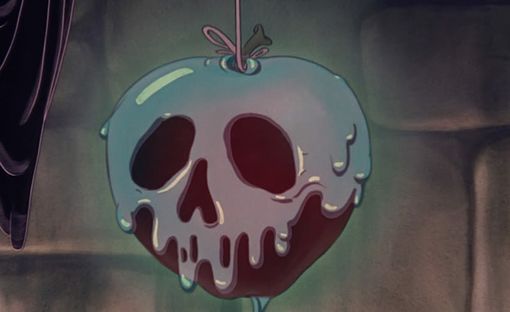 Editor’s note: Enjoy reading articles about your favorite hobby and engaging with fellow gamers? We do too, but hosting and producing our site isn’t free. Please consider visiting our Patreon page and supporting us at any amount. We put every dollar back into the site and its production, and your help has allowed us to have certain paid article months for our contributors (such as this month). Thank you for your continued readership and your support! -David, Blog Manager Milgrak advised me to contact you as soon as you brought him an unusual gown your slain vampiress was wearing, apparently the work of the peerless Borcan fashion designer Bertold Iacomo. On your life, let no one know you possess the Iacomo Rose! It’s not cursed in the typical sense, but it’s hunted by many desperate and resourceful parties, servants of the one who took a thing of beauty and made it a venomous weapon. Many who have vanquished immortal creatures of the night have been unprepared to face the true ruthlessness of mortals in the daytime. I will tell you what I can…. Master poisoner Ivan Dilisnya’s creativity and cruelty have borne strange and bitter fruit that take many by surprise. PC’s with plenty of antitoxin can still fall prey to these stranger facets of Ivan’s poison politics. 1) Borrowed Time Ivan’s inner circle of guards knows that if he dies, he takes with him the formula for Mercy, the temporary antidote that delays the fatal Borrowed Time in their systems for one more day. Of course, these servants cannot travel far without additional Mercy to take with them, but there are rumors that a few have magical delivery methods for long distance travel. Having learned the hard way that some would spend their last day in suicidal revenge, Ivan considers carefully before starting the week-long process of poisoning a new recruit, and prefers condemned criminals who genuinely see the poison as a reprieve. 2) Gravitas Gravis The faux-Darkonese name is painful, but no one would dare correct Ivan’s grammar. Upon hearing of Somnos wine from Darkon, he created his own fast-acting intoxicant to loosen lips. A mind clouded by it is prone to rambling and finds everything funny, but nothing more hilarious than divulging their own secrets. Many screams heard in Degravo are actually the sounds of people recovering, realizing that they have gleefully destroyed themselves with barely any interrogation at all. 3) The Iacomo Rose This blush-colored taffeta gown was worth more than a small farm when Ivana gave it to a foreign agent provocateur to help seduce Ivan. Wise to their intrigues, Ivan used his Envenom ability to infuse the dress with strength-draining contact poison, but the woman inexplicably ignored the effects and fled to Dementlieu with the dress. Now Ivan seeks the dress in the hopes of understanding what went wrong. The lethal poison actually prevents mold and mildew, and if handled with the accompanying unvenomed gloves someone might live long enough to try it on. 4) Varcolac Similar in some ways to catalytic poison, banewort preparation is blended with another plant to make the victim allergic to that plant for several hours. Some of Ivan’s quislings are fond of blending it with wolvesbane to make “varcolac,” which makes it appear the victim is infected with lycanthropy. Victims may isolate themselves from their allies if they believe the ruse, and may draw the attention of monster hunters either way. Rumor has it that Ivan has created similar alchemical preparations that create temporary allergy to a specific metal, such as silver, gold or cold iron. 5) Lampwick A form of catalytic poison combined with ether, naptha and a sample of the victim’s hair, this oily liquid slowly evaporates to create thick vapors that cause one specific person to lose consciousness. The poison runs out faster when burned but the effect is much stronger, and dried tobacco can absorb quite a volume in lampwick and still remain flammable. Many of Ivan’s more subtle hunters are fond of lampwick pipes or cigars, surrounding themselves in clouds of smoke in situations where they might confront a target in public, and even blowing a puff of sleep-smoke as a direct weapon. 6) Night Ride This poison has two possible effects, both diabolically subtle. A single dose up to four hours before sleeping will disrupt sleep ever so slightly, causing the victim to talk or even walk in their sleep. A clever person can manipulate the sleeping victim into confessing secrets, implant a suggestion, or direct specific actions of the sleeper. A double dose will allow the victim to sleep normally to observers, but they will wake exhausted, the poison having prevented them from getting any rest. The former is popular in situations where blackmail is preferable to murder. The latter is generally part of a gaslighting campaign, or to keep a foe from restoring strength. 7) Veridian Ivan’s obsession with eternal youth led him to rumors of a Valachani sorcerer’s elixir of immortality. All attempts to reproduce the formula yielded only spectacular deaths, but Ivan saved one of the failures for when he isn’t concerned about collateral damage or cleanup. A bottle of this bright green liquid grants acid and fire immunity and fast healing, but the victim suffers increasing nausea, interspersed by vomiting monstrous oozes and slimes made from their own dissolving organs. Over the course of three days, the victim continues to live sans spleen, stomach, lungs and finally heart, growing thinner and paler with each purge until they collapse into a featureless puddle. No one knows if the original person’s mind remains intact. If so, and if they are truly immortal, this may be the worst fate Ivan has inflicted on anyone. I don’t mean to frighten you, nor would I extort your property from you. My offer is a fair price for a dress that cannot be safely worn and attracts unwanted attention, and none of the others hunting it will make such an offer. Indeed, you may be lucky if they let you keep your life. Dr. Phillippe Delapont Leyshon Campbell has been playing and writing for Ravenloft for over twenty years, from the Kargatane's Book of S series, playtesting D&D 3E in a Ravenloft campaign, to the ill-fated Masque of the Jade Horror. He married his wife on Friday the 13th after proposing to her on Halloween. By tradition, the first story read at birth to each of their three children was The Barker’s Tour, from Ravenloft’s “Carnival” supplement. Picture Reference: https://io9.gizmodo.com/strychnine-a-brief-history-of-the-worlds-least-subtle-1727903421 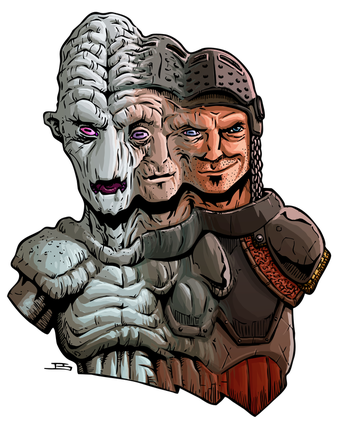 A huge thank you to all our Patrons for their support! All money from the High Level Games Patreon goes directly back into the blog and supporting the writers. Thanks to you all articles are paid this month. Become a Patron today for exclusive patron-only content and first access to High Level Games products. 2018 is upon us. With the new year comes the tradition of self-betterment. Sure, the majority of resolutions aren’t followed through. Most people don’t even make resolutions anymore. Instead we sit behind the cynical idea, “Why should I only make goals at the start of the year when I could make goals year round?” You’re not fooling anyone, you’re not making goals at all. You’re just saying that to be cool. (And it’s working, I think you’re cool.) Today I want to propose some resolutions that are more fun. They’re related to this wonderful hobby, after all. Here are 4 resolutions for your roleplaying hobby. I’m sure there are readers who do all these things every year, but these are all new to me and I’m excited to make them goals for my 2018 in the wonderful world of tabletop rpgs. 1) Play A Class You’ve Never Played Before In both Pathfinder and Dungeons and Dragons I’ve been quite consistent with my class choice. I started with a fighter back when I was in grade 7 and I stuck with that class for a long time. The class was simple and its strategy was sound: “that is big man, me hit big man with sharp stick.” Eventually I branched out and tried something new, a ranger, and let me tell you… it wasn’t nearly as impressive a change as I initially thought it would be. My ranger was ultimately a fighter with a bow and certain enemies they specifically don’t like: “that is green man, me shoot green man with sharp stick.” I’m guilty of this even last year when I started a campaign as a cleric, got eaten by some sort of swamp monster, and resurrected as a barbarian. It’s in my blood, I want to hit evil big monsters with sharp sticks. However in 2018 I want to play a class that never even picks up a weapon. “What’s a sword? All I know is my magic spell book.” My knowledge of Pathfinder has grown exponentially since I’ve started DMing it and now I can’t believe I went so long only playing one class. There are a lot of interesting and cool classes out there to try out, so if you’re like me, make your 2018 about trying something completely new. 2) Play A System You’ve Never Played Before It seems this article is about me admitting to a bunch of my tabletop hidden shames. The only roleplaying systems I’ve played have been Dungeons and Dragons, Pathfinder, and Fiasco. (One of these is not like the other…) I started playing with 3rd Edition DnD and then that transferred over to Pathfinder when 4th Edition came out. Since then it’s just been the go-to game for my friend group. We knew the rules, we enjoyed the game, and we didn’t really find the need to try other systems. Now that my knowledge of the roleplaying world has grown I realized that I’ve been playing the wrong game for what I like to get out of my tabletop experience. I’m not really a dice chucker, I like getting into a character and interacting with the imagined world around me. Thanks to people from this blog and other people I’ve met, I’ve discovered a lot of awesome systems I can’t wait to play. On my agenda for 2018: Viewscream, a Skype based survival horror rpg, End of the World, a game where you play yourself trying to escape the end of the world, Worldwide Wrestling, that one is pretty self explanatory, and Ten Candles, a horror system a friend of mine is running that I’m purposely keeping myself in the dark for. Any others I should check out? Let me know in the comments. 3) Incorporate Physical Props Into Your Game Recently I’ve been feeling that our games of Pathfinder need to feel a bit more tactile. Picking up dice and throwing them down on the table is nice, but it doesn’t really help fully immerse a player into the game. Props can go a long way in making players get themselves into the game in ways they never would before. It requires a little bit more work from the GM, but it’s worth it for the experience it provides yourself and the players. If you’ve never made a prop for one of your games before the first place to start is with simple letters or scrolls the players receive. Imagine the look on their faces when the innkeeper says a letter arrived for them and you pull an actual letter out for them to read. They’ll each want to take turns reading and it makes the experience more believable for the players. It may not seem like much, but for the moments they’re reading the letter it’ll take them away from the table and actually put them in the world in which they’re roleplaying. For me, the prop I’m going to be starting my 2018 with is actual healing potions. We always have people question the effects of healing potions in Pathfinder. My plan to fix this while also immersing my players is buying a bunch of small jars and putting the required amount of d8s inside and labelling it with the matching healing potion. I’m excited to see their reaction when I pull one of those out at the table. 4) Run A Campaign Outside Your Comfort Zone I have only recently started running sessions of Pathfinder, starting with the Mummy’s Mask Adventure Path. That book provides the adventure, but as I’ve gotten later into the campaign I’ve felt more comfortable going off book and providing my own story and twists to the adventure. It’s with this that I get to my true tabletop resolution of 2018. I want to run a campaign outside of my comfort zone. Running a dungeon is where most DMs start. I was one of those DMs. A dungeon is straightforward encounter and the namesake of the game. However my love of the game came from all the roleplaying encounters that I was put in outside of the dungeon. One of my first loved campaigns involved me and another playing being in charge of a small city. We had to deal with negotiations with neighboring cities, balancing the city economy, and making sure the citizens were happy. It may sound dull, but it was an awesome roleplaying experience. Dungeons are comfortable to me. Political intrigue is not. My goal for 2018 is running a campaign based entirely on political intrigue inside of a nation’s courts. If you’re a DM and you’ve been visiting certain themes in your campaigns, why not try something completely new? Try something outside of your comfort zone and maybe you’ll discover talents you never knew you had. Now if anyone asks you what your resolution for 2018 is you can respond with any of these. They may give you a few bizarre looks, but in the end a resolution is just for yourself. A goal inside of your hobby is still a goal, so why not use a tradition as a reason to play even more of what you love playing? I know that’s my plan for this next year. Justin Cauti is a writer and Twitch streamer. He plays board/roleplaying games on the internet at http://www.playingboardgames.tv. Follow him on Twitter for updates on his boring life and writing projects @LeftSideJustin. Artwork Courtesy of JEShields, whose work can be found at https://www.patreon.com/jestockart  Looking for something festive to spice up your D&D game this December? Or perhaps you are looking to run an interesting one shot to give your players a break from the weekly campaign you run. Either way, here are nine Christmas-themed enemies, filled with cliche and class, to throw at your players this holiday season. 1) Silent Knight “Sleep in heavenly peace.” Silent Knight is a noble holy warrior, one who has no patience for vocalisation. His Aura of Silence disrupts nearby spellcasters, and his martial prowess with his longsword is a challenge even to skilled warriors. And if you are bested by this knight, nobody will hear you scream. 2) O’Holy Knight “Long lay the world in sin and error pining, till I appeared and the soul felt its worth.” This blessed knight basks in his own image. He sheds light in an area around him, and delivers powerful smites to any who oppose him. If you can outmatch his skill… and perhaps his ego, then you will stand a chance at defeating him. 3) Carol, of the Bells “One seems to hear, words full of fear, from everywhere, filling the air.” This Hag is into Christmas Fear more than Christmas Cheer. With enchanted bells on a chain (animated object) she can instill a fear and hatred of Christmas ornaments, such as tinsel and bells. 4) Little Drummer Boy “Shall I play for you, pa rum pum pum pum.” Don’t let this halfling fool you, if your feet are moving, it’s to his beat. Using a very rare form of psychic manipulation through the rhythm of his resonance, the Little Drummer Boy can control the speed and direction of the life forms around him. 5) We Three Kings Of Orient (Also 6 And 7) “Field and Fountain, Moor and Mountain, King forever, Ceasing Never, Over us all to reign.” Three kings of orient, the Shadow, the Blade, and the Bow. Respect these beings of eastern tradition, or they will tear you to pieces. The Shadow will dart from corner to corner, waiting until the perfect time to strike. The Blade will engage the toughest-looking opponent head-on, and will fight fiercely to the death. The Bow will position themselves at a vantage point, and pepper his enemies with piercing bolts. 8) T’was The Knight Before Christmas “He spoke not a word, but went straight to his work.” This powerhouse has a cold, meticulous fighting style, which is designed to cut down enemies and then finish them where they stand. He will not allow passage beyond his guardian point in Saint Nicholas’ dungeon. If you want to get past, you will have to go through him! 9) Saint Nicholas “You better watch out...” A fallen angel, Saint Nicholas is a powerful celestial warrior who has retained his divine power after going rogue. When he is calm, he is a calculating, skilled opponent, with precise blade mastery that will prove a difficult challenge for anyone in his way. But if he is wounded, you better watch out! Saint Nicholas is prone to enraging once bloodied, abandoning accuracy and composure for savage attacks and reckless strikes. Dungeons and Dragons is more than just a weekly role-playing game for you to turn up, kill some orcs, and go home. Dungeon Masters, fill your world with iconic and memorable enemies. Cliche is just icing on the cake when used in the right dose. Players, push your DMs to be more and more creative, and to experiment with their game. I hope that everyone is getting some time off in the next month or so, and is able to play some RPGs over the holidays.
Peter is an avid dungeon master, role-player, and story teller. When he's not running homebrew campaigns, he is creating new worlds, or he is reading and writing fantasy stories, forever immersing himself in the gaping black-hole known as the fantasy genre. Picture Reference: http://tvtropes.org/pmwiki/pmwiki.php/Main/BadAssSanta 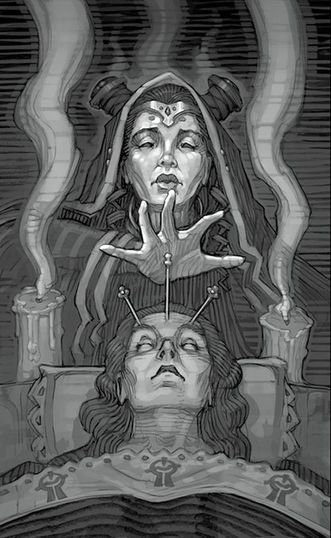 Any players worth their dice know to fear offending the Vistani, lest they be stricken with some unspeakable curse, but the gypsy-folk are not the only ones who can invoke their wrath. Just as Ravenloft games keep players on their toes with vampires immune to garlic and mirrors, or lycanthropes immune to silver, players should never become too confident in their expectation that being nice to the Vistani--or anyone else--is a guarantee against being cursed. If your plot calls for a PC to be cursed but they are on their best behavior for all the usual suspects, you might want to review some of these less usual alternatives. 1) No Good Deed Goes Unpunished Ravenloft is known for moral quandaries, and sometimes getting cursed is the result of doing the right thing: The Evil Eye has an example of this. In addition, because justification is measured from the invoker’s point of view, an evil or deceived invoker might feel wronged for all sorts of reasons. In the epic-level Reckonings campaign, a charismatic PC encouraged an abused daughter to stand up to her mother and leave, and the mother felt highly justified in the Dangerous curse she invoked on him in response. 2) Midnight Cat These supernatural felines had a +15 to curse checks in 3E. Some DM’s would temper that to avoid upstaging the Vistani, but it's also possible that the cats are so rare, so solitary, and so stealthy that their curses haven’t earned a reputation yet. With such a bonus, a Midnight Cat could toss out unjustified curses at will with a reasonable chance of one sticking, no matter how frivolous. Heaven help the poor party who actually does something to offend the creature. Of course, Midnight Cats can also remove curses, but their price for doing so may require a Powers check. 3) The Wishing Imp As the song goes, “There is no curse or evil spell...that’s worse than one we give ourselves.” This truism at the heart of Ravenloft Powers Checks is also known by those who have once possessed the infamous Wishing Imp, a diabolical figurine that grants twisted wishes. The difference between a twisted wish and a curse is mostly a matter of perspective, but it's even possible a wish could be granted in the form of a literal curse, such as a character wishing for prowess in unarmed combat and becoming infected with lycanthropy. 4) The Ancient Dead Ancient Dead (mummies) with the Curse of Vengeance salient ability add their rank +4 to curse checks. Between that and their bonus to charisma, a powerful mummy could rival the Vistani for laying curses. In addition, the single minded passion that drives their unlife, combined with any unusual customs of their culture of origin, makes it possible for them to justify curses for unexpected things (see #1). 5) Alchemical Purgative From Van Richten’s Arsenal, spiritual purgatives expel the affliction from the body, but the effect is temporary unless another takes up the burden. While a few selfless souls will knowingly take a curse for someone they love or to spare an innocent, (see below) most uses of this purgative involve a hapless victim duped or even forced to ingest the purgative before the time limit expires. PCs should beware bets or dares to eat or drink anything, especially if the other person seems to be in a hurry. 6) Expiation One 2nd edition alternative to paladins in Ravenloft was the paragon, a pure soul reborn over endless generations to fight the forces of darkness. One of their powers was “expiation,” the ability to temporarily absorb curses. This allowed the paragon to absorb a curse temporarily, either to give a little respite or to endure some rigorous cleansing process that the original victim might not have survived. Alternately, some religious group might have an expiation ritual that could work for other volunteers, allowing any PC to stand proxy for someone less fortunate, only to remain cursed when the cleansing portion of the ritual goes awry. 7) Flask Of Curses In a land like Ravenloft, we often forget about items like this from the original DMG, whose powers are enhanced in the Demiplane of Dread. Not only does it not matter whether the curse is justified, but these flasks can release any magnitude of curse, even the Lethal kind that could permanently change someone into an undead or other monster. Of course, this works best if the flask is a unique item with a history that explains its accursed nature and provides a theme for the curses. 8) Deity The Unspoken Pact that distances clerics from their gods does not prevent every expression of divine supernatural power. A PC who violates religious tenets or desecrates holy ground may pass the Powers check, but there may yet be divine consequences. Touch of Death has an example of a powerful divine curse for grave robbing from the Akiri: aging one day per year, with lifespan unchanged. Curses come in all shapes and sizes, from embarrassing to lethal, mildly humorous to eternally torturous. Having ways to inflict or remove curses in unusual ways allows them to be used more creatively, adding depth and drama to your gameplay and explore hidden parts of the world’s mythology. Your players may not actually thank you for cursing their characters, but they should still have a good time fighting against the darkness, and that’s what Ravenloft is all about. Leyshon Campbell has been playing and writing for Ravenloft for over twenty years, from the Kargatane's Book of S series, playtesting D&D 3E in a Ravenloft campaign, to the ill-fated Masque of the Jade Horror. He married his wife on Friday the 13th after proposing to her on Halloween. By tradition, the first story read at birth to each of their three children was The Barker’s Tour, from Ravenloft’s “Carnival” supplement. Picture Reference: https://www.pinterest.se/pin/560205641129076605/  I’ve been playing D&D for a long time, including almost 3 years of 5th edition rules. In every edition, I’ve been tinkering and tailoring the rules to better suit my style as a Dungeon Master, along with the themes of the campaigns, and the types of players in my group. Included here are a handful of house rules which you may elect to use yourself. 1) Combat Attrition Rule: Whenever you fall unconscious, you also gain one point of exhaustion, in addition to the normal effects. I am currently running a dark-world campaign, and implementing this rule has really had a positive impact on my campaign. I’m not a fan of the fact that a hero can drop to 0 hp ten times a day, but after a goodberry they are up and ready for action in an instant. This rule adds an extra penalty for hitting 0 hit points. It also uses the exhaustion mechanics, which are otherwise barely touched by most dungeon masters. The only way to recover exhaustion is to eat, so rations come back into the fray too! This starts to put a heavy weight on PCs who have sustained debilitating injuries in combat, which may impact their willingness and effectiveness for future combats before resting. Characters now worry about hitting 0 hp, even with some heals to get them back into the action, and this has made combat feel more thrilling and dangerous for my players. 2) Random Character Creation Rule: Instead of choosing standard array, roll your stats IN ORDER. Then make your character based off where your good scores are. This is an interesting setup that reminds me of the old days before D&D was even referred to by an edition number. With fixed stats stats, you might find yourself playing an interesting combination - salvaging what scores you rolled to build some unique race/class combinations. Another variation of this rule with a similar result is to roll dice to determine race and class. 3) Spellslingers Rule: There is no longer a maximum number of spells that you can cast on your turn, provided that you have the required actions to cast them. I know a lot of DM’s and players who didn’t even realise that there was a limit, but in my opinion this is one of those rules that just gets in the way, so I remove it. Remember, whenever a DM changes or removes a rule that causes the PC’s to have a higher amount of potential power, you may have to increase the difficulty of encounters to match! If I had a dollar for every time I hear the phrase “I’ve house ruled my game, but my level 5 party keeps beating my CR 5 encounters easily,” I’d be able to retire. Just keep in mind what you’re changing, rules-wise, and who it benefits. Then balance the scales accordingly. 4) Reverse Armour Class Rule: Instead of the DM’s rolling to hit, the Players roll a “defence” roll, based on their armour class. They have to roll d20, and add their armour class to it. The DC is 20+ the monster’s attack bonus. So the players need to “beat” the monster’s attack threat DC in order to defend against the attack. For example, if the monster has an attack bonus of +7, it’s attack DC would be a 27. A PC with a 15 AC would need to roll a 12+ to avoid the attack, while a PC with a 19 AC would only need an 8+. If the player rolls a 1, the monster gets a critical hit. I personally don’t like this variant rule. However, I have heard that some groups enjoy it. For starters, it puts the players in a dice-rolling alertness during combat, and they really feel like they are getting attacked, even if they successfully defend against it. The physical act of rolling dice outside of the player’s turn can increase engagement in combat and decrease distractions. Finally, it also removes some of the work the Dungeon Master has to do. Honestly I don’t mind rolling attacks for my players. But I appreciate that D&D groups do whatever they like in order to create the most fun game possible for their respective group. 5) Deadly World Rule: All death saving throws are DC:15 instead of DC:10 This rule makes hitting 0 hp far less forgiving without magical/medical means at the ready. Under the standard rules, when a character falls unconscious there is roughly a 55% chance that the character can pull through. However, when you up the DC to 15 (succeeding on a 15-20 is a 30% success chance) a character has a much greater chance of bleeding out without medical or clerical assistance! 6) Modified Flanking Rules Rule: Flanking no longer provides advantage, but instead provides +1d6 to hit, AND +1d6 to damage. I mainly altered this rule so that flanking stacked with advantage - as there are at least 50 abilities or spells that confer advantage in D&D. Using this has made my combats much more fluid, and they rarely grind to a crawl now. It also makes swarms of enemies more dangerous. Goblin hordes will try and get into flanking positions, to get those juicy bonuses on to-hit rolls and damage. Being outnumbered is a very serious and realistic threat in medieval-themed combat (or any combat) and I find that this rule correctly illustrates this! Just remember, as a DM, when you alter rules in favour of the enemies, take that into account when creating and balancing encounters. 7) Less-Swingy Initiative Rule: Initiative rolls use a d10 instead of a d20. Not a rule I use, but one that I’m interested in. A d20 has a large variation of numbers, meaning that even having a +5 bonus to initiative could have you going last a few combats in a row. By dropping it down to d10, it makes any flat bonuses more consistent, allowing the faster characters to be going first more often. 8) If You Miss The Table, You Fail. Rule: If you roll your dice and it misses the table (and lands on the floor) then you count as rolling the lowest possible result. Was it an attack roll? Counts as a 1. Rolling 2d6 damage and one dice falls off the table? That dice counts as a 1. I don’t mind this rule. Sure it’s a little silly, but I mean, how hard can it be? After all, if you can’t hit a huge table with a little dice from a 3-6 inch distance, what hope does your character have!? Have you got any house rules that you use for your RPGs? Post them below in the comments. Peter is an avid dungeon master, role-player, and story teller. When he's not running homebrew campaigns, he is creating new worlds, or he is reading and writing fantasy stories, forever immersing himself in the gaping black-hole known as the fantasy genre. Image is courtesy of JESHIELDS: https://www.patreon.com/jeshields/posts 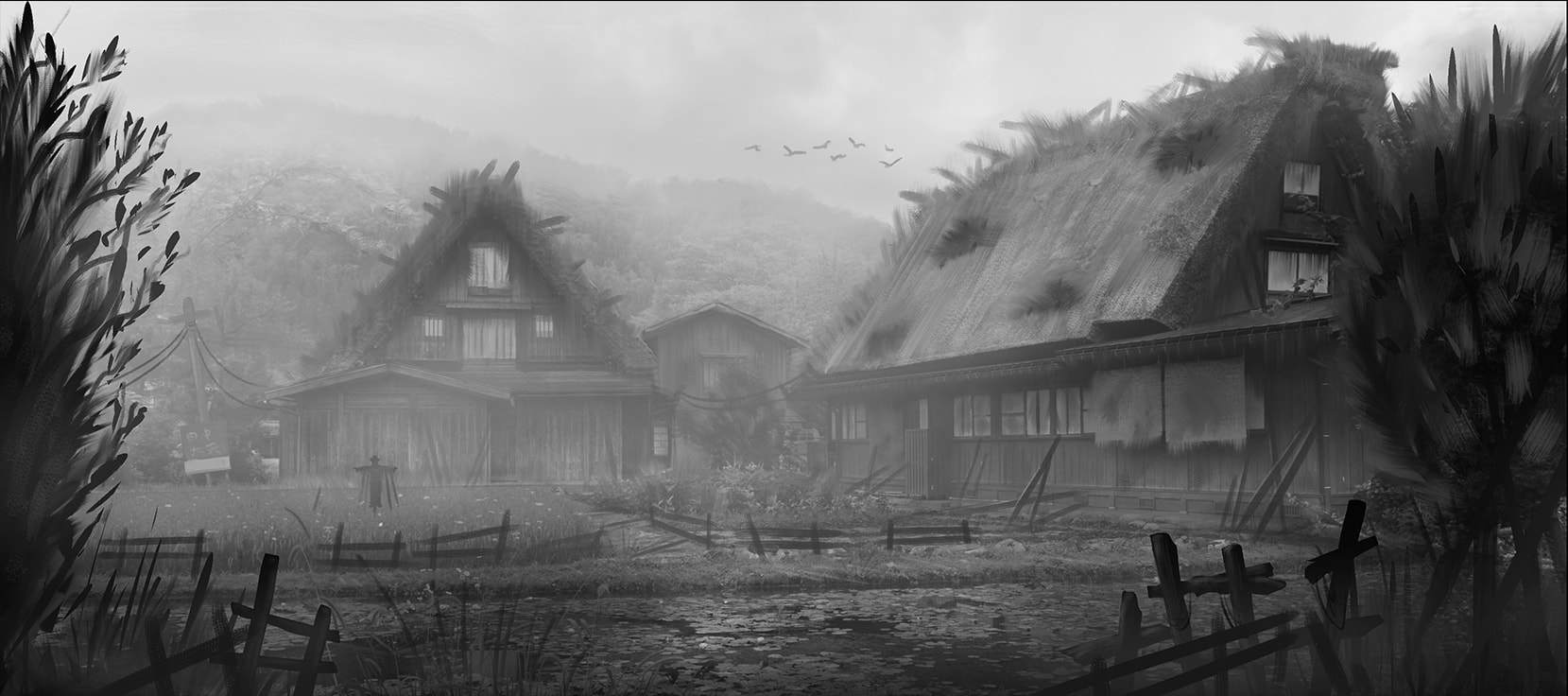 If you enjoy Ravenloft Corner or any of the other fine articles on HLG, please consider donating to our Patreon to fund our work. Of all the things that make Ravenloft unique as a campaign setting, the most standout feature would have to be Dark Powers checks. The most tangible evidence for the existence of the Dark Powers, their system of moral judgement is by turns capricious, arbitrary, and cruel, but at the end of the day boils down to this: a codified system for identifying and punishing the most wicked of the realm’s inhabitants. Unfortunately, the system has yet to be translated for 5th edition. It starts with a sin: the PC performs a wicked act which may attract the attention of the Dark Powers. The Dark Powers tables from the 3rd edition campaign supplement can give you a good idea of where they start, but the percentage chance that the Dark Powers will take notice of the transgression is usually small. Small crimes like gossip or petty theft can be safely ignored. A lie which actually causes someone harm might invoke a 1% Dark Powers check, as might threatening a bar patron with bodily violence. Actual violent crimes (excluding reasonable self-defense) might incur checks at a 2-4% depending on severity. Murder or other brutal and sadistic acts might cause a check of an even higher severity, up to 8-9%. Casting necromancy spells (or using spells which summon evil beings) should always provoke a powers check at a percentage equal to the spell level. Even owning a necromantic or evil magic item is enough to warrant a 1% check per week. If the target should roll over the check, there is no result. Should they roll equal to or less than the target, however, they begin to slide down the scale of degeneration. If the sin has a victim, the victim’s alignment or relationship may modify the check. Evil victims or bitter enemies may halve the check number. Good (or apparently good) victims, or those who are close to the offender, may double the check number. Innocent victims should always result in a higher check number. (A full spread of Dark Powers transgressions can be found in the 3e Ravenloft Campaign Setting Core Rulebook, and is still entirely functional with 5e.) As the character begins to be embraced by the Dark Powers, they develop additional abilities or powers. Unfortunately, these powers always come at a cost, invariably one that the character considers to be too high. Usually, the powers will seem to give the character exactly what they want, but inevitably the concomitant curse will actually deprive the character of the very goal they seek. Eventually, a character of sufficient depravity may be ‘rewarded’ with their own domain within the Mists. Stage One When a character first draws the attention of the Dark Powers, it may seem at first as though they’ve been rewarded. The ‘gifts’ the Dark Powers give such people often overshadow the drawbacks at first. Path of the Miser: Obsessed with wealth and its acquisition, the character gains a keen insight into the value of items. They gain advantage on all rolls to determine the value of an item. However, they must ingest 1 gp worth of treasure (non-food items) per week or begin to suffer the effects of starvation. Path of Rage: Weak and helpless, the character finally gains the ability to fight back against those that would oppress them. They can rage once per long rest (lasting up to 1 round per level, which can be ended early), gaining +2 to melee damage rolls, but all attacks against them gain advantage during this time. (If they have rage as a class feature, use whichever damage bonus is higher.) Path of Dread: The character finally gives in to their impulse to compel others through intimidation, and finds that they have a talent for it. The character gains advantage on Intimidation checks, but suffers disadvantage on Persuasion checks. Stage Two Characters at the first stage of degeneration may recoil or even repent at their evil, but those who descend to the second stage display a commitment to wickedness that will only deepen over time. The advancement of their curse reflects this. Path of the Miser: The character’s lust for wealth deepens, and their curse begins to become a permanent part of them. They must now ingest 1 gp of treasure per day or begin to suffer the effects of starvation. However, they gain the ability to safely consume anything that they can fit in their mouth. Path of Rage: The more the character vents their wrath, the more invulnerable they feel. The character gains resistance to bludgeoning, slashing, and piercing weapons in rage, but if they are injured and have rages remaining, they must make a Wisdom save (DC = damage dealt) or enter a rage involuntarily. Path of Dread: The unexpected thrill from inflicting terror on someone begins to thrill the character even more, and they discover it is even easier to unsettle those around them. As an action, the character may cause a victim who fails a Charisma save (DC = 9 + the cursed character’s Charisma modifier) to be Frightened of them for one minute. The character can no longer attempt Persuasion rolls, and suffers disadvantage on Deception rolls. Stage Three At this point the hook is set, and the pernicious cost of the character’s curses are now becoming apparent. Relationships suffer, and the character’s unholy nature is much more difficult to hide. Path of the Miser: The character now requires 1 gp per hit die per day in consumed treasure to stay alive. They learn to ferret it out with unerring accuracy however, gaining proficiency in Perception and Investigation and advantage on all rolls to ferret out hidden wealth. Path of Rage: The character’s fury intensifies even as their self control withers further. The character gains advantage on all attack rolls while in rage, but they may no longer end their rage voluntarily so long as enemies or strangers are present. Path of Dread: Fear has become the character’s stock in trade, so much so that they find they cannot always resist spooking those around them. Whenever the character succeeds at a roll that they had advantage on, all enemies or strangers within 15 ft. must make a Charisma save (DC as above) or be Frightened of the cursed character for one round. Stage Four Once a character reaches this level of depravity, there is rarely any going back for them. Few villains of this magnitude would even consider repenting, and fewer still are willing to commit to the work that cleansing their blackened souls would require. They often are forced to withdraw from any remaining close relationships, as their foul nature is almost impossible to hide from that level of scrutiny. Path of the Miser: The blackhearted character’s foul diet affects them permanently, and their bloodstream is replaced by threaded veins of gold or silver. The consumption requirements rise to 5 gp per hit die per day. The character now has immunity to poison damage, and resistance to piercing and slashing damage. The veins in their body now bulge against their skin, giving them an unnatural appearance. Path of Rage: Anger is almost all the character knows. They suffer disadvantage on all rolls they make when not in a rage, and cannot discriminate enemy from ally while enraged. They only require a short rest, rather than a long rest, to regain all their uses of rage. Path of Dread: The character has become so feared that even their name takes on special power. Anyone hearing the character’s name spoken aloud must make a Wisdom save (as above) or become Frightened for one round. The character’s presence, or even knowledge, of this ability is not required. Stage Five At this point the character is well and truly a monster. Redemption is all but impossible. At the DM’s discretion, the character may become an NPC under their control, rather than let such a despicable abomination continue in the hands of a player. Path of the Miser: The miser’s appetite is now voracious. They must consume 10gp per hit die per day to avoid starvation. In addition, any person the character touches must make a Constitution save (DC = 9 + the character’s hit dice) or be Petrified into gold, silver, or some other precious metal. Path of Rage: Having failed to master their anger, the character finds that their anger has become their master. The character always suffers disadvantage on any rolls to resolve conflicts in any way other than violence, and their appearance becomes hunched and brutish. They gain advantage on all rolls while enraged, and can rage at any time without restriction. Path of Dread: The character is now a horrific monster that inspires the utmost horror in all who see them. Anyone who sees the character’s naked visage must make a Constitution save (as above) or suffer 1d6 Necrotic damage per hit die of the dreaded character. Whenever a person becomes Frightened of them, the character regains 1d6 hit points. Conclusion In Ravenloft, rock bottom may not be the end for the most loathsome of evildoers. The Mists have a way of rewarding those at Stage Five degeneration with their own domains, making them true Darklords. Those in the broader multiverse sometimes find themselves sought out by the Mists, to be dragged to their new domain whether they wish it or not! Jim Stearns is a deranged hermit from the swamps of Southern Illinois. In addition to writing for the Black Library, he puts pen to paper for High Level Games and Quoth the Raven. His mad scribblings can frequently be found in anthologies like Fitting In or Selfies from the End of the World, by Mad Scientist Journal. Follow him on Twitter @jcstearnswriter, or listen to Don, Jon, & Dragons, his podcast. Picture Reference: https://www.myth-weavers.com/showthread.php?t=329013 The Ravenloft setting uses “Powers Checks” to reflect the gifts and curses imposed by the mysterious Dark Powers upon those who transgress moral laws. This gives some structure for great stories of corruption and redemption, but the exact game mechanics of these checks have always been open to questions by fans. It’s even worse when the player supports their character’s decisions, and enforcement of the rules spirals into an argument about who has the correct moral compass. If you want to include temptation in your game, here are 4 optional rules to keep Powers Checks from going the route of politics and religion.
1) Whispering Shadows Assign each player the “dark side” of another PC. During gameplay, these “shadows” entice their target to commit acts that are worthy of a Powers Check, and can actually offer specific boons that will come from giving in--the DM decides the corresponding penalty. If the controlling player accepts the offer, the player that offered it gets a token they can trade in at any time to turn one die roll into a natural 20. This is a great opportunity for players to roleplay temptation, as well as get to know other characters better. 2) The Burden Of Time Ravenloft PC’s study tomes of forbidden lore, brave sinkholes of evil, steal cursed objects, and worse. Reflect that general attrition of the soul by having players roll percentile dice when they level up, 1% cumulative for every 1000 XP they earn (10K for higher level groups). When someone fails, go through their most recent actions and find an appropriate offense. If nothing works, consider foreshadowing (see below), or change the powers check result to a failed horror check. 3) Foreshadowing If a player argues that their offense wasn’t that big a deal and shouldn’t be punished, let them look for a better opportunity. The failed roll becomes foreshadowing of what the PC is about to do, rather than what they have done. Of course, while the Dark Powers are interested in little things done for good reasons, such as white lies and grave robbing, it’s best to only share the results of these rolls with the DM in case the player is eyeing that “Betrayal, Major” column in the rulebook. 4) Probation Some players look at roleplaying as a chance to behave however they want without any consequences. While powers checks can help discourage this, the system is not designed as a teaching curve. If one of your players is playing Chaotic Stupid, consider a probationary result. When they fail the roll, they don’t suffer the consequences immediately. Instead, the PC is on probation: anything additional within the next (in-game) week that warrants a check will cause them to fail. So depending on whether you need some more structure or flexibility, one of these rules may give you what you need or inspire you to create your own tweak. Just remember that whatever rules you use should be applied consistently, so that the Dark Powers feel like an omnipresent moral hazard instead of the whims of the DM. Leyshon Campbell has been playing and writing for Ravenloft for over twenty years, from the Kargatane's Book of S series, playtesting D&D 3E in a Ravenloft campaign, to the ill-fated Masque of the Jade Horror. He married his wife on Friday the 13th after proposing to her on Halloween. By tradition, the first story read at birth to each of their three children was The Barker’s Tour, from Ravenloft’s “Carnival” supplement. Picture Reference: http://thecampaign20xx.blogspot.com/2016/03/dungeons-dragons-guide-to-curse-of.html 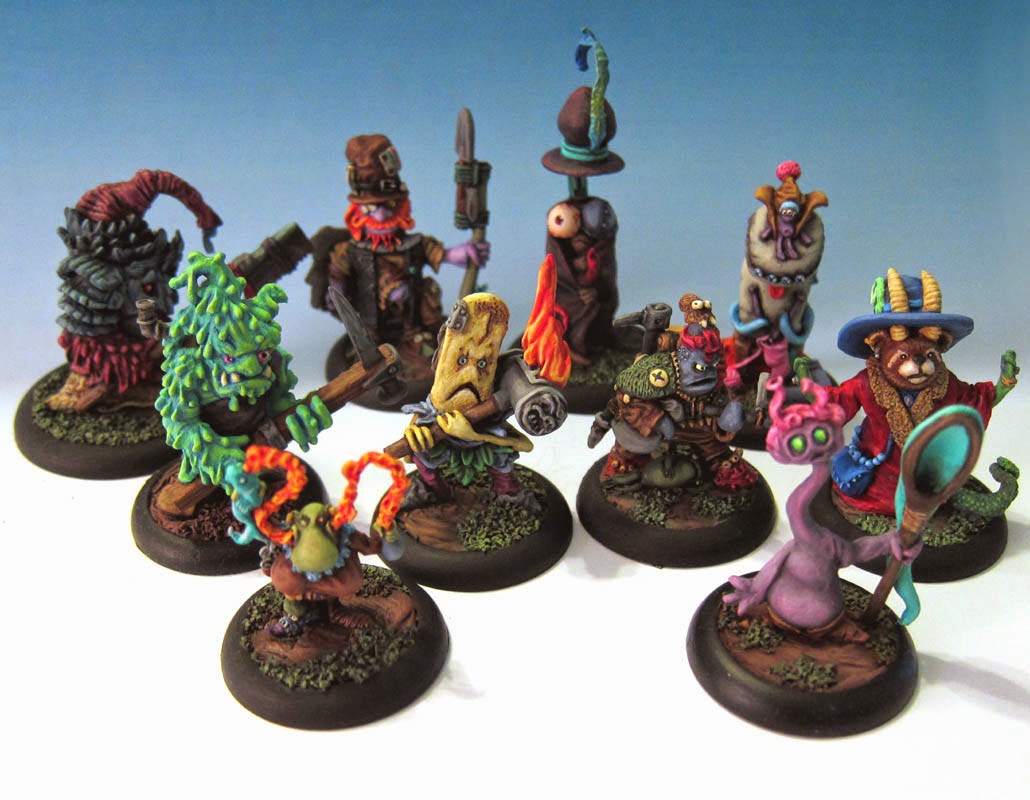 I did not see that one coming! – My favourite D&D creatures, and why I think some of them are underused. The first moment when I got hooked on D&D was, oddly, when I opened the Monster Manual for the first time. I was thinking in purely narrative terms, and a book filled with physical prompts to the story felt like Cthulhu had smiled upon me. Since then, I’ve fought with many of these creatures, and although I love the sameness of some (I’m ok with Dungeon = skeletons), I do feel some creatures don’t get enough time in the limelight. So these are some of my choices, random, and in no particular order. 1) Aarakokra (Humanoid Eagles/Hawks) The Aaarakokra were one of the first things to get me into D&D, and this is no exaggeration. I opened the Monster Manual (MM) and there they were, first entry. Oddly, it wasn’t as a creature that I saw them, but NPC’s. I saw a major avian civilisation, living in sprawling towers and cliffs. I saw a people like humans, with good guys and bad guys, but that could fly. I ended up using one as an apothecary in my first adventure, and ‘caw caw’’d her voice throughout. I then lost my voice for 3 days. 2) Were-things (Polymorphs Human/Animal) I love werewolves, always have. The MM opens up other possibilities, were-tigers, etc, but lycanthropy is a favourite. I think it could work well as a cursed character, revealing him/herself as a were-creature at the worse possible moment. Also, their ability to infect others makes them a much bigger threat than usual. 3) Doppelgangers/Mimics (Shapeshifters) Perhaps in the same way as the previous entry, I find doppelgangers and mimics inherently interesting. Anything and anyone could be something or someone else. The possibilities are endless. I simultaneously like the tragic aspect that a creature with all faces and shapes might lack one of its own. 4) Dragons I am ambivalent about dragons. I mean, is there any creature more iconic in this game? It’s in the name! I’ve come across dragons on many games I’ve played, and they were usually used as the uber-boss. One game, they were the brains behind the operation, and were the ones hiring the party, which was a nice variation. I don’t know, I just feel they’re played just as Smaug (From The Hobbit fame), stuck in a cave shouting threats. I think Shadowrun might have ruined dragons for me. Dragons should be pulling the strings behind the curtains, they are certainly powerful enough, and old enough, to do it. And if you meet it in a cave, it’s because a) it wished for it to be so or b) the players were so amazingly cunning they surprised it (yeah, right….). 5) Drow (Subterranean Elves, Dark-skinned, White Hair) The Drow were originally presented as ‘cave elves’, and as the Aarakokra, they have a deep and intricate backstory that usually gets ignored. Now I’m not saying you need to know everything ever written about them (I certainly don’t!), but the moment a drow appears, people immediacy assume he or she is evil, which I think is a serious reduction in the potential of the race. I once had a Drow selling sausages and kebabs out of a cart in the middle of town, during the day. He had a massive cloak to protect him from the sun, and the origin of the sausage’s meat was dubious at best, but it was good to see my players waiting for him to do something evil/treacherous. He didn’t. He was a seller of kebabs. Even the change was correct. 6) Ghosts Another creature I consider underused. Maybe it’s attacking the party because it has a purpose? Maybe it would actually help the party if someone took the time to figure out WHY it is haunting or attacking the party at that point? 7) Gnolls (Humanoid Hienas) I *love* gnolls. They’ve got a face only a mother would love and an aggressiveness to match. I think they work well in packs, but for me, their value lies as the stupid minions of the mid-level baddie. You know what I’m talking about. The jailer that falls asleep with his back to the cell? The guard that is busy smoking, and ignores the moving shrub? I can easily see them as a threat AND as comedy relief. 8) Merfolk (Mermaids/Mermen) I’d use these guys every near-water adventure I could think of. Maybe there’s a parallel adventure to the party’s happening in the depths, and then suddenly both collide? They’re bound to a civilisation down there at least as advanced as ours. So why wouldn’t their duke get a party together to research what the heck the surface-dwellers are up to? Boom, now you have two parties in the half-sunken temple trying to get the artefact at the same time. Good luck with that. 9) Mind Flayer (Octopus-headed Humanoid) The Ilithids are Cthulhu-looking interdimensional brain-suckers, and this is pretty much everything anyone needs to know about them. They are properly dangerous, but I’m fascinated about running an adventure in one of their lairs (maybe with the party pretending to be some of their slaves), with the party constantly exposed to technology WAY beyond their ken. And when you meet an Ilithid every other room…. How’re those persuasion rolls going for you? 10) Minotaur (Bull-headed Very Large Humanoid) Massive creature that is fine as opposition, but I believe works equally well as an NPC (See above). I had a minotaur cloth merchant in one of my adventures. I had to create him in a second, I opened the MM and there he was. He had a string between his horns, with a number of ribbons of fabric floating in the breeze. He was his own billboard. And these are my first 10 underused creatures. What are yours? Rui is a Portuguese scientist that, after ten years doing strange things in labs, decided to become a teacher. Then, two years ago, like he was bit by a radioactive D20, RPG’s came into his life, and he’s now juggling teaching, playing and GMing quite happily. He lives in the UK with his partner Joana, an ungodly number of potted plants, 4 to 5 RPG’s at various stages of completion (and across as many rule systems), and maps, cursed idols, evil necklaces, and any other props he can get his hands on. He’s been writing for HLG for a few months, and is one of the resident vloggers. He can be reached at @Atomic_RPG. Picture Reference: http://menaceminis.blogspot.com/2014/07/walloping-krong-and-low-life-miniatures.html 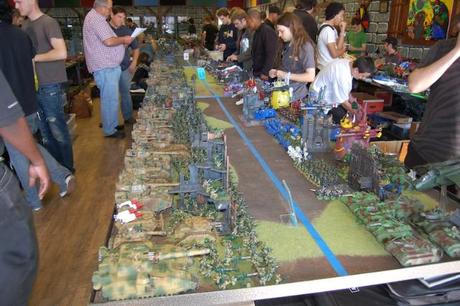 At Anime Weekend Atlanta 2017, I presented a panel titled “Weebs Can Throw Bones, Too!” The panel was about D&D, anime, how the two mingled, and capped off with various TRPGs from Japan that are currently available in English. I was also one of the last acts on the final day, which gave me two days of free time for mischief and terrible ideas. Terrible ideas like signing up for a 30 Player D&D Game. WHAT THE FUCK WAS I THINKING!? I’ve run games with with, like, 10 players before, and it was like pulling teeth to get things going. I’m not sure why I thought this would work. Maybe I was hoping somebody had thought of some clever ploys to prevent this from turning into a shit-show, or maybe I’m some kind of glutton for punishment. Let me illustrate for you a few problems with any sort of large gathering of people like this. 1. Big Crowds Make Big Noise This is kind of a “no duh” point: if you have a bunch of people, their combined voices are going to get loud. Even a smaller, four player game can get pretty loud. You don’t realize just HOW loud this situation gets until you have 30 people all together for one purpose, and they’re all vying for one person’s attention. It gets REALLY fucking loud. It’s no longer like being in a noisy restaurant where you just have a great many conversations going on at once with you trying to tell the waitstaff what you would like. It’s more like you’re at a giant U shaped table with more than 20 other people, and all of you are shouting your orders to a lone waiter. He can’t understand or process everything at once, and despite his constant reminders given to the unruly horde he is serving that he can’t hear everybody at once, the unanimous shouting continues. And the waiter (understandably) becomes all the more sardonic as these events unfold... 2. Be Polite (Optional) And Be Efficient (Mandatory) I had to draw the line and cut my losses when it was taking hours of real time to go forward just seconds in game time. And I don’t mean combat. Part of the problem was due to everybody shouting what they were doing, or reshouting if they felt what they said wasn’t heard. Another part was due to the GM having to constantly repeat themselves, partly because people got confused or didn’t listen. However, the other part of the problem was in how the GM handled things. There were several instances where the GM would rant for a few minutes about the absurdity of what was going on. For example, when we (all 30 of us) were following a priest to the basement of a church. When we finally reached the basement. The GM then stopped briefly to say, “You all realize that all 30 of your are following this man, right? All 30 of you shuffling through this narrow corridor.” This happened after every moment where the players exclaimed what they were doing. Sarcastically pointing out the absurdity of what’s going on isn’t something I object to, but it seemed to happen frequently enough that it felt like nothing was really going on. I think I wouldn’t have had such an issue with this if the sarcastic comments moved the action forward, such as, “One of you helps carry the priest along as he begins crawling to the basement, and the remaining 29 of you knuckleheads squeeze along behind them through the narrow corridors.” 3. Play To The Strengths Of Your Game A lot of the problems with this massive game DID go away during certain points: particularly, after that iconic phrase was uttered: “Roll For Initiative” This was the time when the game felt it was at it’s most orderly. For as much as people like to paint Dungeons and Dragons as a game of wizards, warriors, and imagination, I think sometimes we forget that it started out as a war game. Much of what the game does best is centered around swords being drawn, straight down to characters being classified by what they could do in this situation. As a point of contrast: I’ve also played in fairly large Vampire the Masquerade games, LARPs to be specific, and combat is always the worse part of these games. When a Vampire character is made, how they may act as a monster (that is, killing) is just as important as what they would do as a person. Being in a persona where I’m wheeling and dealing is more engaging in a Vampire LARP, mostly because the combat system for World of Darkness is not particularly interesting or exciting. 4. Group Up And Simplify Even if combat is the strong suit of Dungeons and Dragons, I’d be remiss if I didn’t mention that the GM did some things to smooth this section of the game out even further. First, after calling for the roll of initiative, instead of copying down everybody’s initiative, he told everybody to write down their initiative so they won’t forget it, and then began counting down out loud. When a player’s initiative number was called, they announced that it was their turn. This is a tried and true method to speed up combat in most games of most sizes; it’s one I even use myself. As the size of the group grew, he used another tactic to speed things up. Players were physically grouped in the room based on their class, and those groups rolled one initiative. That is, wizards, warlocks and sorcerers were all in one group, fighters, barbarians, rangers and paladins were all together, and so on so forth. This had the benefits of allowing similar archetype characters to strategize together, or for players less familiar with their character to taught how things work by another more experienced player. These ideas, along with numbering players, also really helped keep things a little bit more organized during combat scenes. 5. Get Some Assistance From Some Assistants GM’s take on many roles such as storyteller, scenario designer, referee, and even instructor as they teach the rules of the game. Doing this for 30 people at a time that you’ve given permission to come and go at will takes a great deal of bookkeeping. While it’s feasible to do this by oneself, the wise decision is to find a way to divide some of these tasks and roles up and allow some other people to do them; precisely like the GM of this event did. There were a few assistants the GM had that could help create characters and get the new arrivals caught up to speed with the game’s events. Another assistant was also in charge of keeping track of player HP and AC for the GM. These assistants also held onto the characters sheets for players who left, and retrieved them for those that returned. In short, they handled a lot of the more mundane but necessary operations for the GM. Without this additional help, I’m certain the game would have dragged on much more than it did. Okay... Overall, now that I’ve thought about it a little bit more critically, I don’t think a massive game of Dungeons and Dragons like this was a completely terrible idea. The GM in charge of it was taking steps to mitigate some of the problems that would no doubt arise. In fact, in defense of his tirades he’d go on about the absurdity of the situation, I can’t imagine that I could run such a huge game for three days straight without getting at least a little bit snide. I’ve heard rumors of the scale of Dave Arneson’s games: rumors that they were similar to what I witnessed that final weekend of September. If anything, I believe I should encourage people to take on herculean tasks like this. Perhaps one day, we’ll discover how to run a thoroughly enjoyable game with such a massive scale. But we won’t come to that conclusion without a little bit of trial and error first. Aaron der Schaedel’s first game he GMed was HERO System 5th edition, for a menagerie of 8 players and 2 spectators. You can read an article about some of the games he talked about during his “Weebs Can Throw Bones Panel” here. Picture Reference: http://www.belloflostsouls.net/2011/02/40k-worlds-biggest-apocalypse-game-results.html  Greetings, traveler! It was kind of you to contact me. I always appreciate the chance to offer my assistance to a fellow adventurer, even one as experienced as yourself. The mysterious circumstances you describe: clergy found in their own shrines and cathedrals (which had subsequently been defaced), their throats torn open, left me quite puzzled until I noticed an additional detail in the sketches you provided. The vandalism and the destruction of holy iconography does not extend above chest height: the perpetrator is quite short in stature. I believe you are dealing with a child vampire. Able to put on the act of a starving, freezing orphan, they are usually welcomed into the place of worship by a merciful clergy member, who is in turn killed for their trouble. Child undead are a terrible tragedy, but are all too common. All manner of undead can come in a childish form, and in some cases can be even more deadly than an adult version of the same creature. Fortunately, there is a sharp divide in the psychology of undead children, and understanding where any specific creature falls in that spectrum could mean the difference between life and death for the prospective monster hunter. Type One: The Innocent Don’t mistake my hyperbole: these creatures are far from innocent. However, the first type of child undead does share a certain lack of development common to small children. They act the way children act, because as far as they know, they are still children. They respond mentally and emotionally to problems as adolescents do, and can often be confounded due to this limitation. (Although sometimes this limitation is more of a burden to an adventurer trying to parley or outwit such a creature.) Undead of this variety may believe they have the same needs as a living child, and often come into conflict with the living while seeking food, shelter, playmates, or the protection of adult authority figures. A child like this often has a protector that provides for their unholy needs and shields them from any direct challenges to their deluded worldview. Aukagaak and her child mummies are an example of such a relationship. Ghosts are far and away the type of child undead most likely to fall into this category. Any type of undead which can both largely pass as human and create spawn without conscious effort (vampires, most commonly) are also likely candidates. More than one adventurer has confronted a vampire parent-child bond hoping to destroy what they believed to be an abomination turning children into undead only to discover that it is the child who is the master and their ‘adoptive parent’ the spawn! One final word to the wise: if such children as these teach us anything, it is the true folly in believing that childhood equates to innocence. Empathy develops during childhood, sometimes later in some children than others. A child turned to undeath before this process is complete can be capable of horrifying acts of cruelty, made even more horrifying by the cherubic countenance that conceived of them. Type Two: The Grown-up Eternity is a long time. For many children cursed with undeath, their mental and emotional development is not hindered by the stunted physical maturation. Indeed, one vampire I interviewed indicated that he’d seen a child vampire whose physical condition made her even more motivated to increase her intellect and experience, to avoid being treated like a child. Undead of this stripe have the psychological maturity of their actual age, not their apparent age. They are often erudite and well-spoken, and capable of laying plans of great cunning. Such creatures may play the role of a child in specific circumstances, usually while feeding or preparing a trap, but when dealing with those who know what they are, tend to revert to speaking and acting like an adult. Merilee Markuza, the child vampiress from Lamordia, is one of the best examples of this type. Creatures that cannot ignore their undead nature, either due to horrific deformity, a feeding compulsion, or a required intent to have become undead, are the most common children in this category. Child liches are not terribly common, but not so uncommon as to never be encountered. Child mummies are frightfully common, unfortunately, and tend to function identically to their older counterparts, especially those that have been placed as sentinels over long forgotten tombs. Fortunately, undead of this stripe often suffer from insecurity. They act as adults because they desire to be adults; a privilege which has forever been stolen from them. Dealing with them amicably requires one to treat them at all times as though the child is a peer. Patronizing or ridiculing them for their physical age is a certain way to enrage them, a tactic that more than one adventurer has used to deceive creatures of this ilk. Type Three: The Changeling The most insidious type of undead child is one that has the full knowledge and experience of an adult, but still chooses to act in the manner of a child consistently. Such monsters enjoy occupying the social position of a child. People go out of their way to protect children, children have few to no obligations or expectations, children can break social morays or go ignored if they wish to: the advantages are endless. Like Innocent undead, they often have families or adopted protectors to shield them from harm. Undead that live in clusters can frequently give rise to these abominations; vampires, ghouls, and lebentods are the most common examples. The horrific nature of their existence makes the self-delusion of the Innocents difficult, but the communal nature of their kind makes it easy to slip into a child’s role. The diminutive undead receives the protection and special treatment they so desire, while the older undead assuage their own psychological trauma by going through the motions of living relationships, helping them to ‘normalize’ their own existence. It’s not uncommon for community members to be just as surprised as adventurers to discover the ‘child’ in their midst is not nearly so naïve as they had believed. Adventurers faced with this type of undead would do well to never forget that its childlike appearance is its primary defense mechanism. By keeping its façade going at all times, the creature is often able to convince heroes to treat it as though it were a child even though they most certainly know it is not. Many times this proves to be a fatal mistake. In Conclusion: Growing Up The attacks you described in your letters seem almost certainly vampiric in nature. Confronting such creatures is often even more dangerous than confronting more mature specimens. Their supernatural strength ensures that they do not suffer the weakness that a human child would, and their undead abilities are under no inhibition whatsoever. Complicating this is your own empathy: heroes are invariably compassionate and helpful at their core, and nothing compels compassion like the plight of a child. Undead youths rely on this, and you can go into your investigation assured that your empathy is their greatest weapon. Safe travels and happy hunting, Frankie Drakeson, Lord Mayor of Carinford-Halldon. Jim Stearns is a deranged hermit from the swamps of Southern Illinois. In addition to writing for the Black Library, he puts pen to paper for High Level Games and Quoth the Raven. His mad scribblings can frequently be found in anthologies like Fitting In or Selfies from the End of the World, by Mad Scientist Journal. Follow him on Twitter @jcstearnswriter, or listen to Don, Jon, & Dragons, his podcast. Image Reference: https://www.vanityfair.com/hollywood/2015/06/birgitte-hjort-sorenson-game-of-thrones-wildling-undead 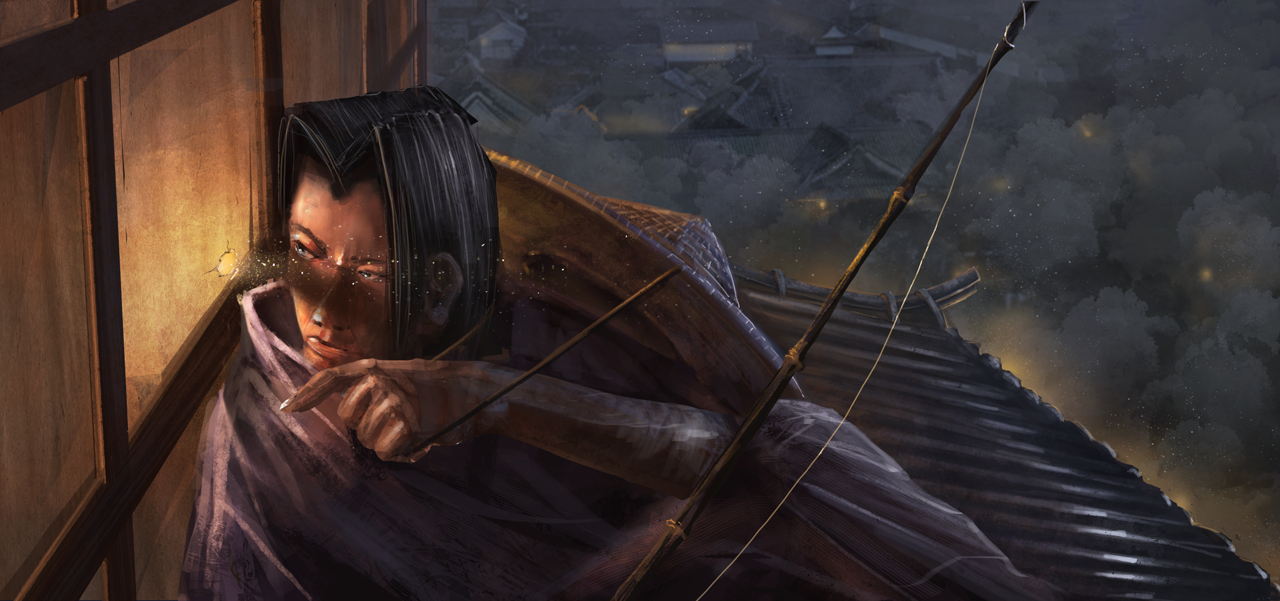 Suddenly Talesian froze, still kneeling over the dismantled sculpture, his eyes snapped shut in the middle of lifting out the handful of enchanted cloth at the heart of the explosive device hidden within. We all wanted to ask what was the matter, but after three minutes holding our breath, we remained silent by force of habit. “Sheth...could you...help me up?” Talesian said slowly, softly. I looked at the others. Lorne and Lydia stirred. They were both closer, surely they could help him without setting anything off. “Only Sheth!” his quiet vehemence drew them up short, his eyes still shut. “Plainsman,” he said to me, “your time has come. The last layer of the weapon is protected by explosive runes; the trap will still kill us all--and everyone upstairs--if anyone reads but a single word.” I helped him to his feet as the others turned their backs, and he patted me on the shoulder with confidence I did not share. “Describe what you see, and I will guide you. Your illiteracy is our best protection now.” Most good roleplaying games have elements of mystery, suspense and thriller, after all, as these are plot based and can apply to any setting. But sometimes you want to push things further and create something that combines genres. Even if you’re not a fan of Smash Up, there’s a lot of fun to be had when you mix the tropes of one genre with the setting and elements of another. If your players are pining for Secrets and Spies while playing Dungeons and Dragons, here are some ways to give them the feel for what they want without changing settings. 1) Secret Whispers The message cantrip can give the feel of modern spy thrillers with agents whispering to each other through hidden earpieces. A social venue the PC’s have crashed allows for lots of whispering back and forth as they distract the mark, case his room, etc. Note that message can work through a scrying sensor, allowing for the “handler” to call shots from a vantage point on the roof, nearby apartment, or getaway vehicle. If the PC’s are too low level to have message work reliably through a scrying sensor (5% chance per level for a scrying spell) perhaps their patron provides the targets of the spell with a some minor magic that “boosts the signal.” 2) Codes and Riddles Codes and ciphers are perhaps the easiest element of spy thrillers to import into fantasy, at least for the party rogue. To kick it up a notch toward spycraft, emphasize the use of regular code books, rotating keywords, and other trappings of old-school cryptography. If your group is into props, making your own code grille for them to decode messages with is a surefire winner. And speaking of codes, the locking wards on doors and chests in fantasy games and settings doesn’t make most people think of computer passwords, but it could. To make the party rogue feel more like a computer hacker, have them focus on the individuality of the person who made the wards for their own personal use. That evil high priest they are investigating...what’s his favorite scripture? 3) Magical Message Drop But what if the secret message isn’t written at all? Have PC’s discover that an enemy agent gets instructions via magic mouth spells when they arrive in a particular public place. Suddenly all those ranks in disguise (or equivalent spells or items) have yet another purpose, as they try to impersonate the agent and get the magic mouth to speak to them instead. But what if someone mistakes them for the real bad guy? Having to stay in character during an impersonation gone wrong is a tried and true staple of the spy genre, and a great opportunity to play “double or nothing” with the information they are after. 4) Macguffins More than any other genre, spy thrillers are driven by small but powerful items prized by the superpowers on both sides. The fantasy genre tends to use maguffins that are powerful for their own sake--the One Ring, the Sword of Shannara, Hand of Vecna, etc. To make a fantasy adventure feel more like Her Majesty’s Secret Service, consider having the PC’s quest for powerful, portable things that they can’t use themselves, such as command words to a powerful golem; rare ingredient for epic spells; the remains of a powerful artifact that can be re-enchanted. Have rival teams of adventurers hired by the other side, both groups fighting to deliver the goods to those who can actually use it. 5) Gunpowder Plots, Minus The Gunpowder The rare gunpowder in fantasy settings is probably better suited for firearms than for a weapon of mass destruction. For a bomb threat, consider instead a necklace or wand of fireballs rigged to break, so that all the charges are released at once (if players aren’t sweating, feel free to count out the d6’s you’d roll for a fully charged device). Explosive runes might be activated at a distance using a spyglass or scrying device, and could set off other effects. The shrink item spell can be used to shrink a bonfire and its fuel to a piece of inert cloth 1/16th the original size, making for an interesting “time bomb” as the duration runs out, or the spell can end early by a collision with a solid surface. This spell lends itself to sabotage; even a simple block of wood could do devastating damage expanding to full size in the right space. 6) Set Pieces And Chase Scenes Finally, good spy thrillers keep a sense of urgency using breakneck chases and treacherous set pieces for the fights. It’s easy enough to import this into a fantasy setting using carriages, carts, and caravels for transportation, but be ready to take it to the extremes. Players are used to fast movement in the middle of combat, with spells and monk abilities to fly around. Don’t let them use these mobility options. Force them to fight bare-knuckled with the baddies in a small space that’s moving swiftly toward oblivion...and then crank up the Mission Impossible theme to eleven. So there you have it: six ways to cross the genres and mix some spy thriller into your D&D fantasy setting for a change of pace. Who knows? If your players like it, you could build an entire campaign around these kinds of intrigues, with them as agents in a shadow war between secret societies. Leyshon Campbell has been playing and writing for gaming for over twenty years, from the Kargatane's Book of S series, playtesting D&D 3E in a Ravenloft campaign, to the ill-fated Masque of the Jade Horror. He ran an extended spy thriller campaign in Ravenloft called “Kara’s Daughters.” http://oriath.wikia.com/wiki/Eyes_of_Sodos |
All blog materials created and developed by the staff here at High Level Games Archives
April 2023
Categories
All
|
Proudly powered by Weebly
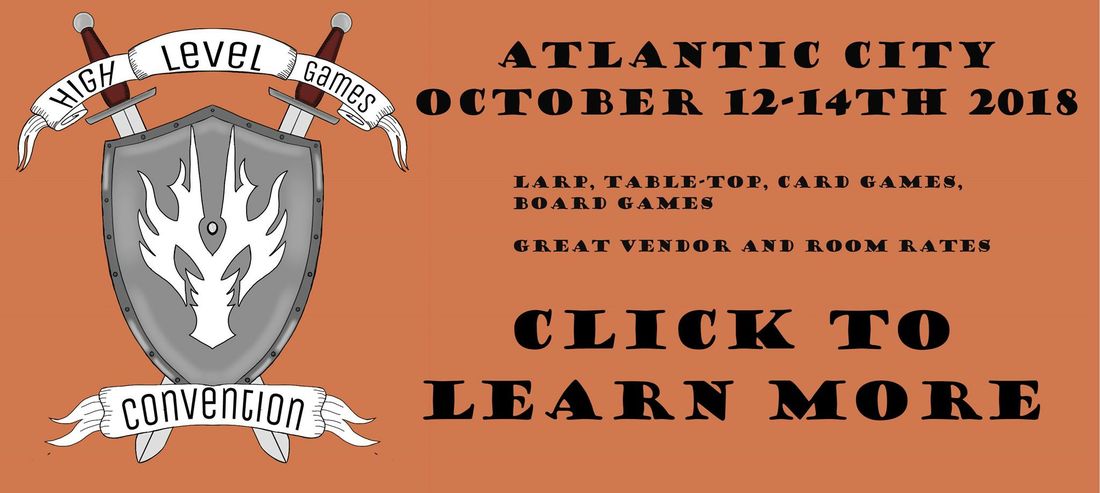
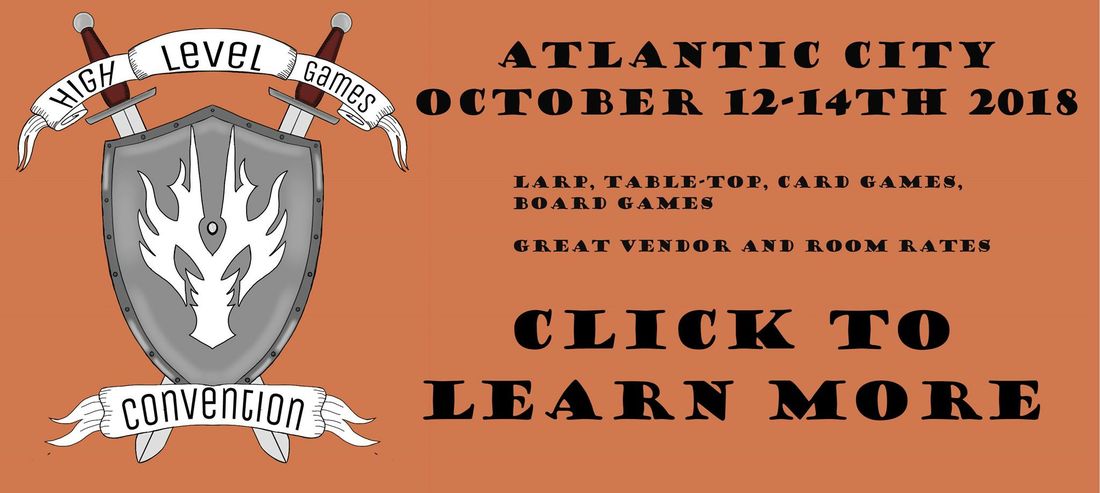
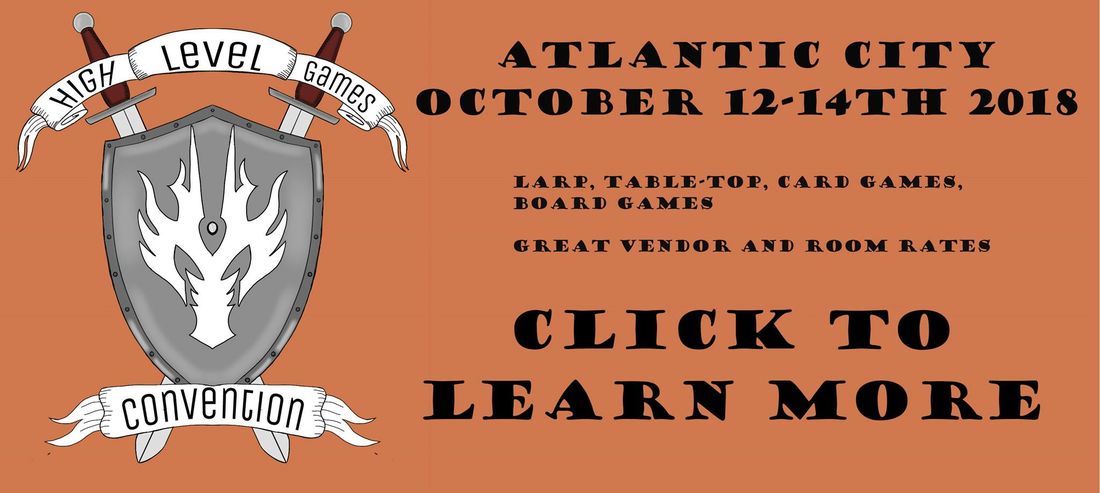
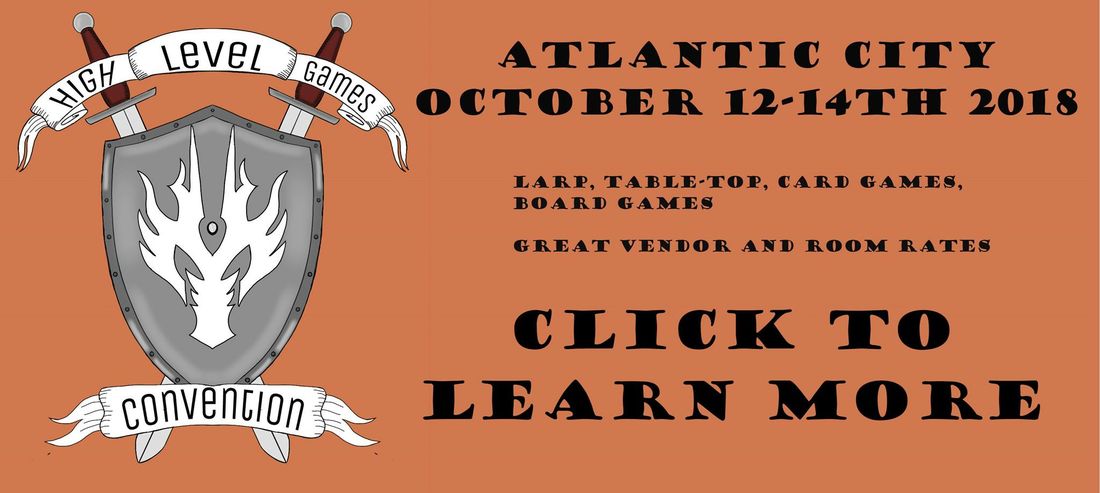
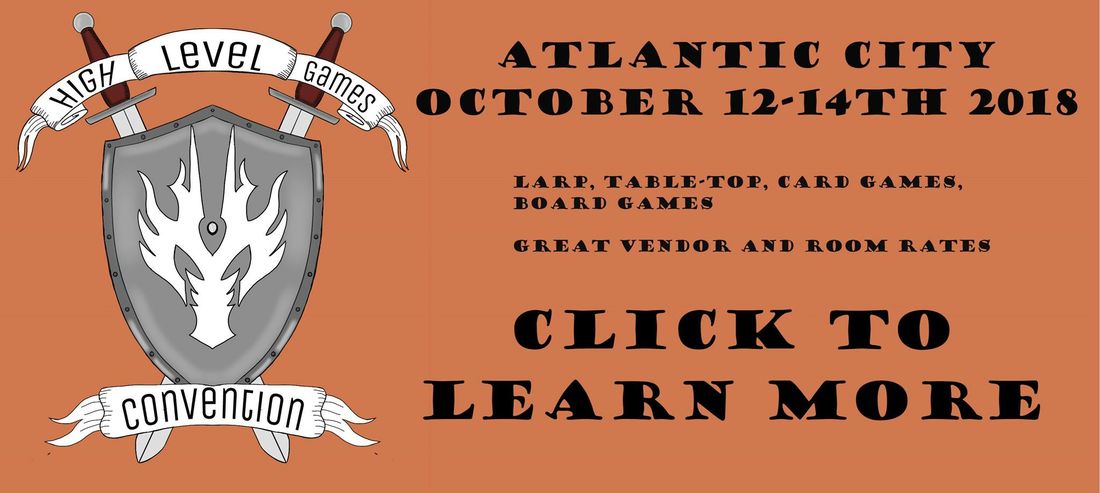
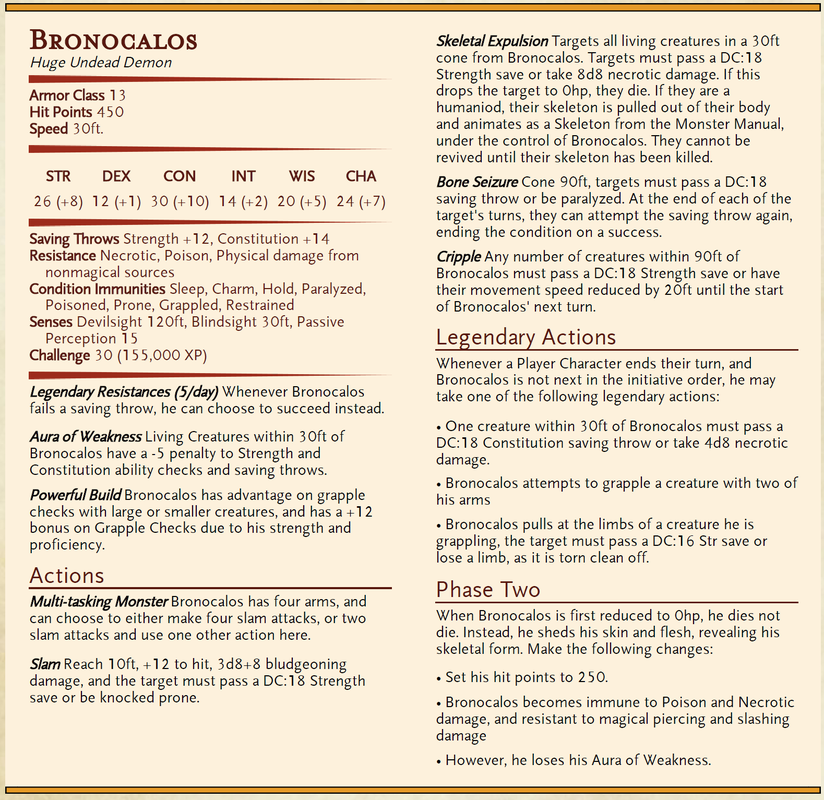
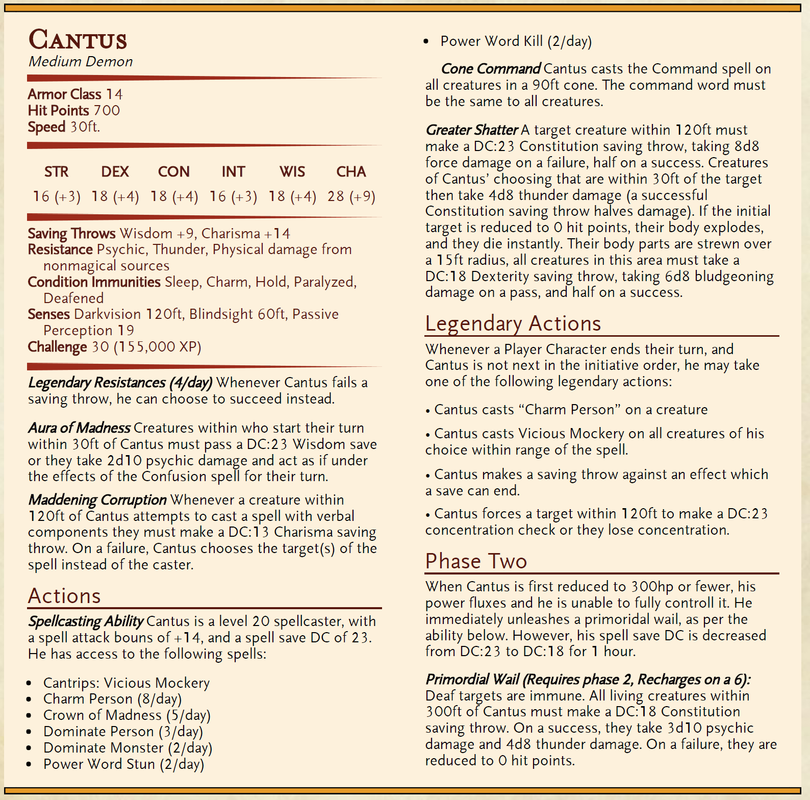
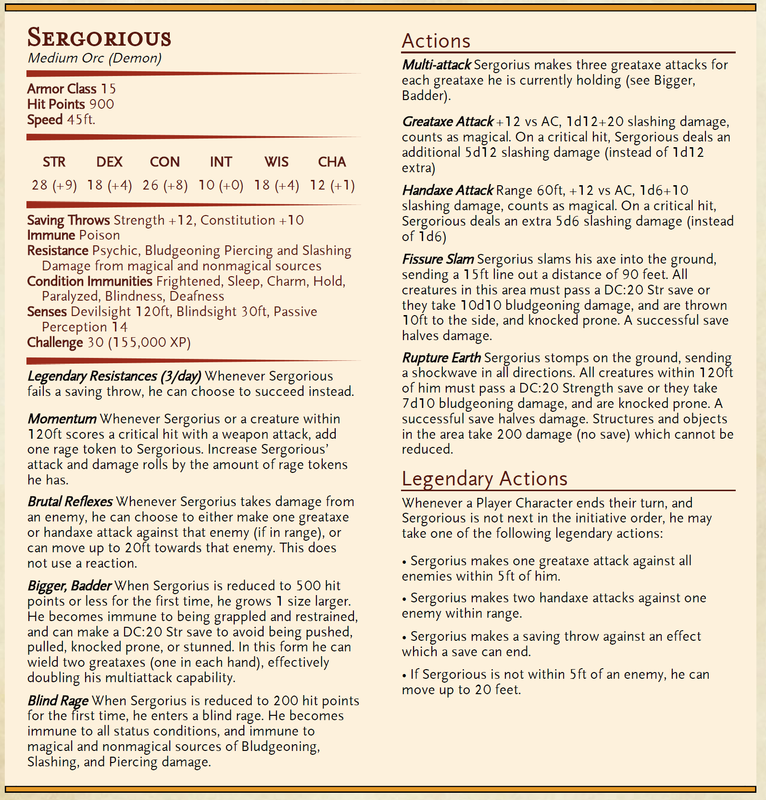
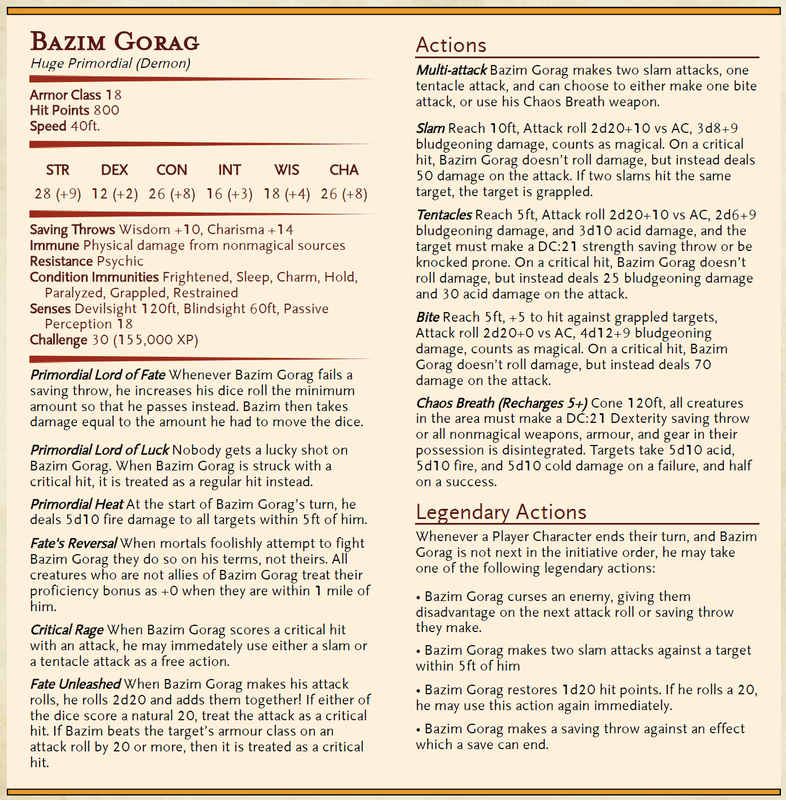

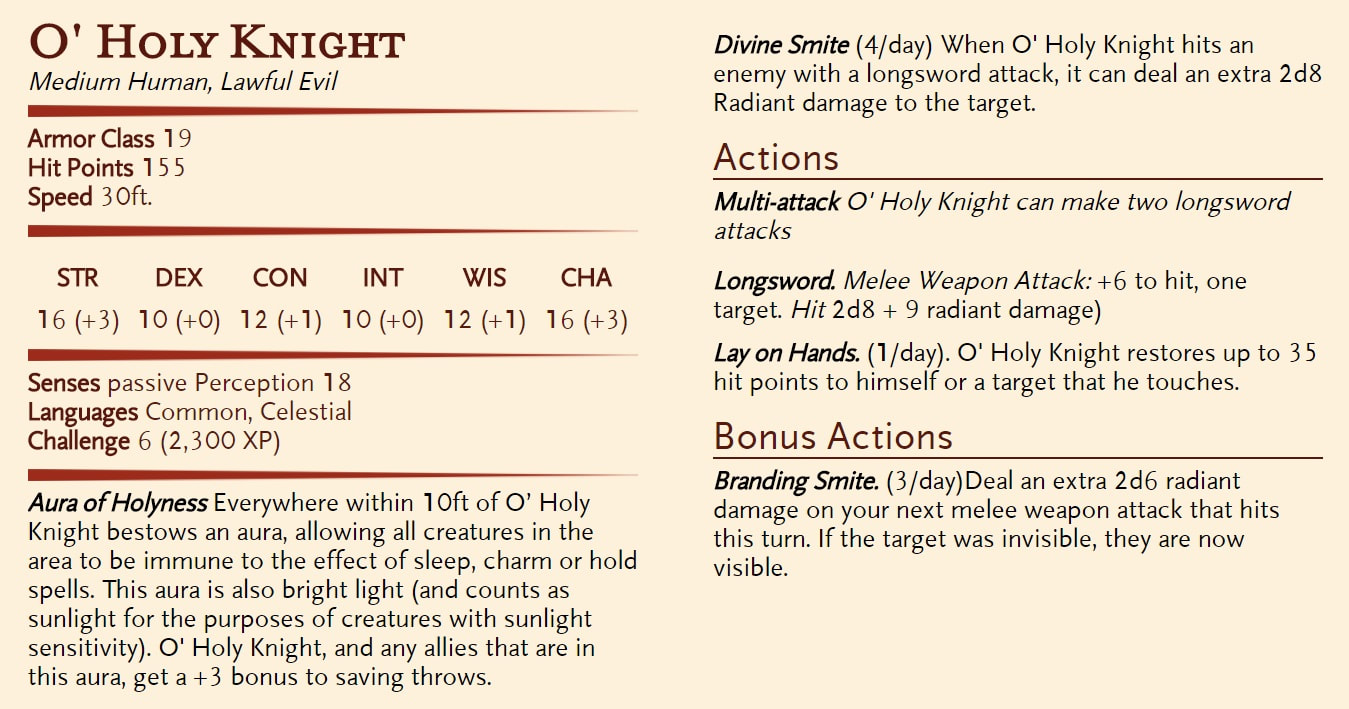

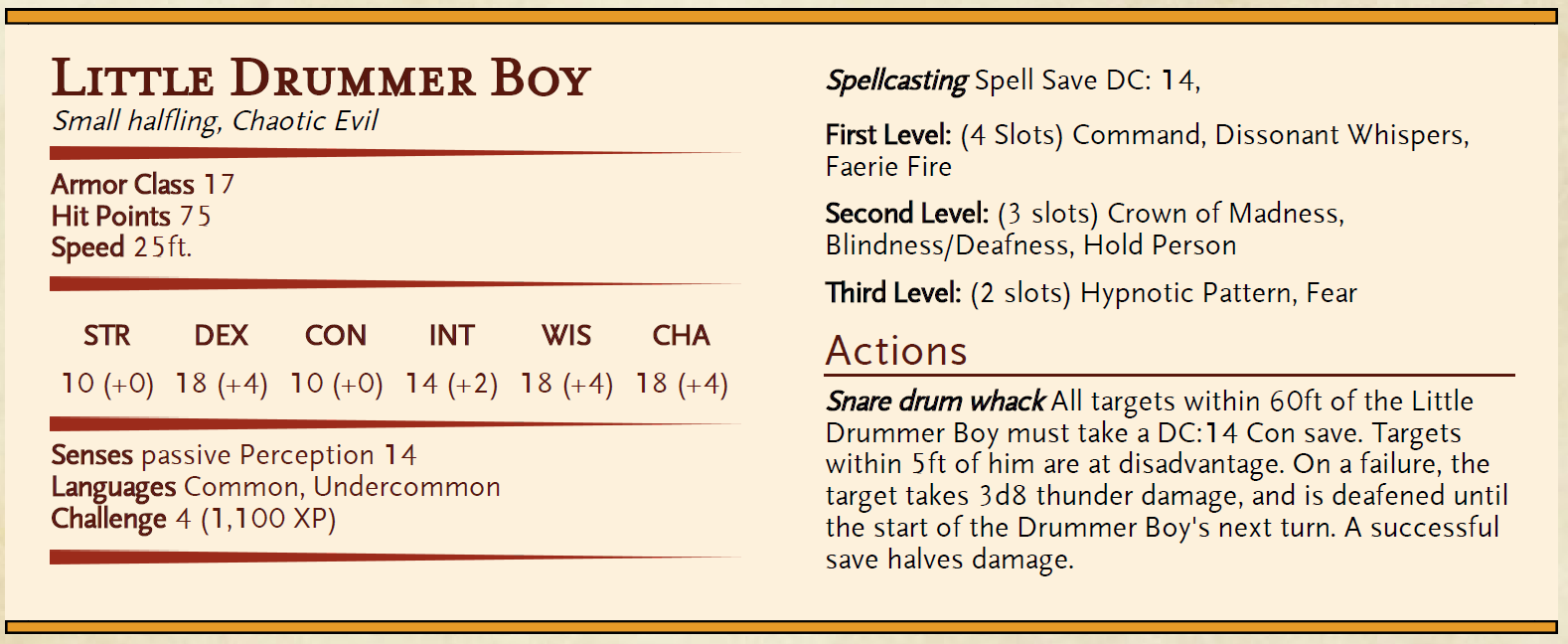
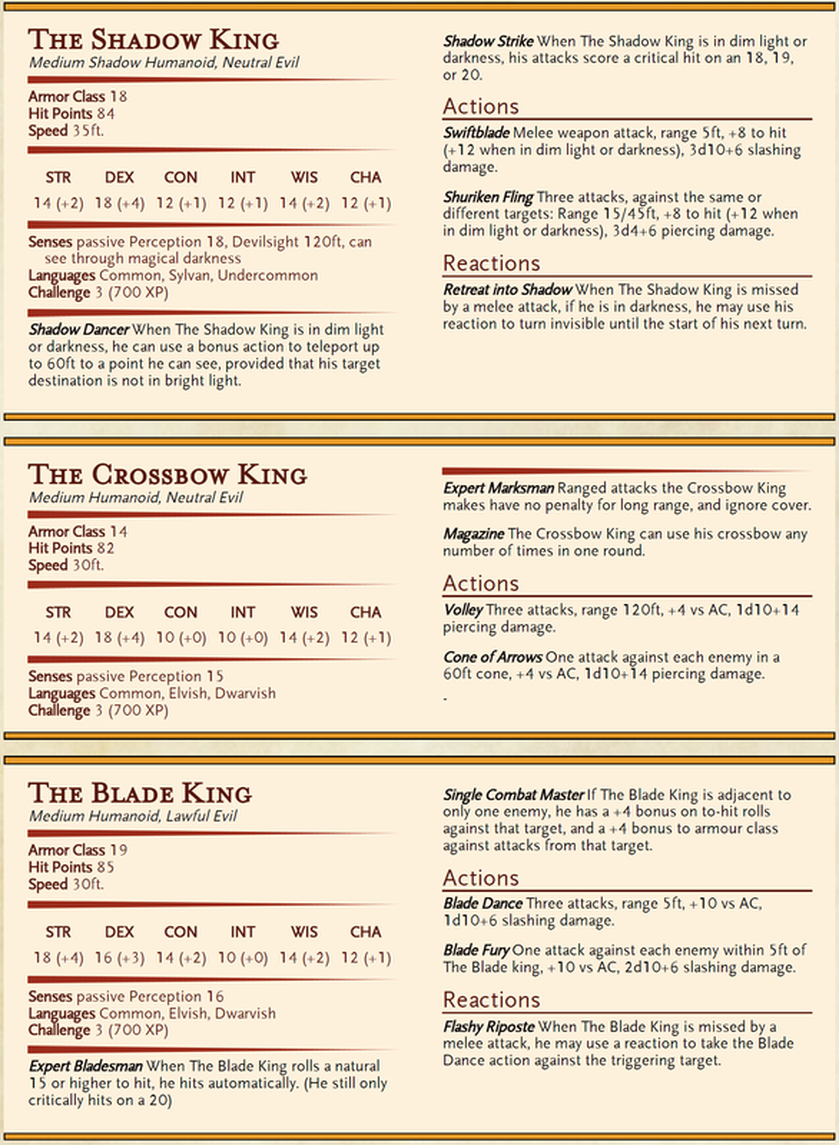
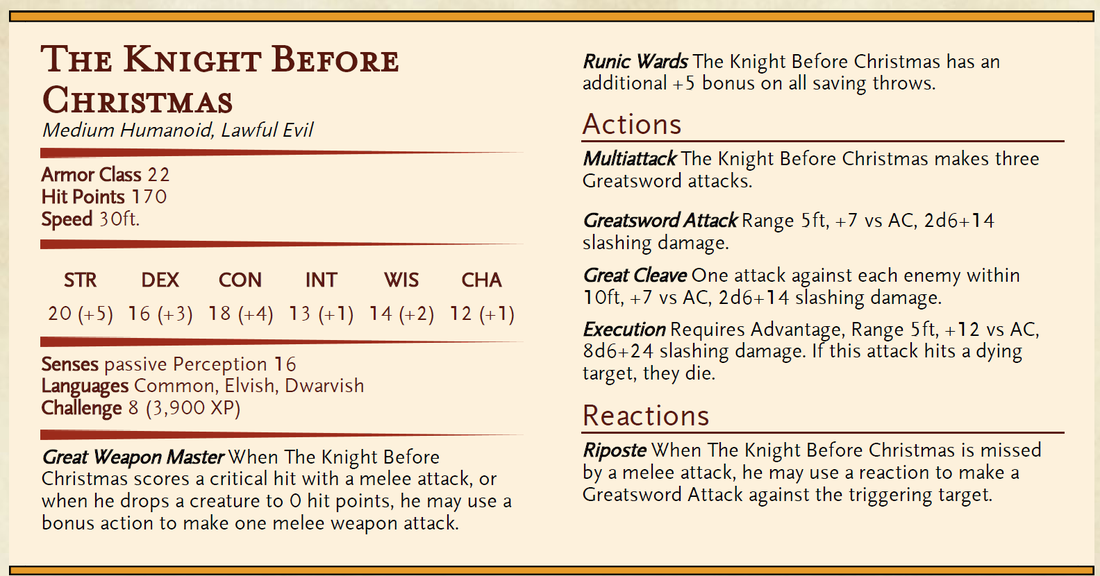
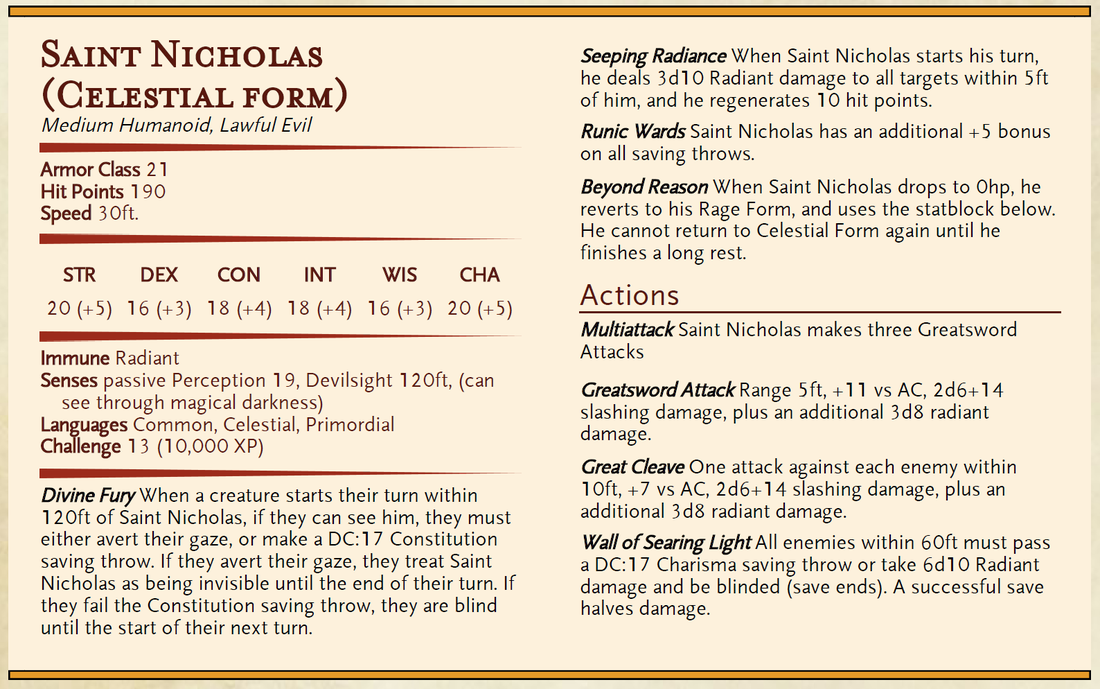
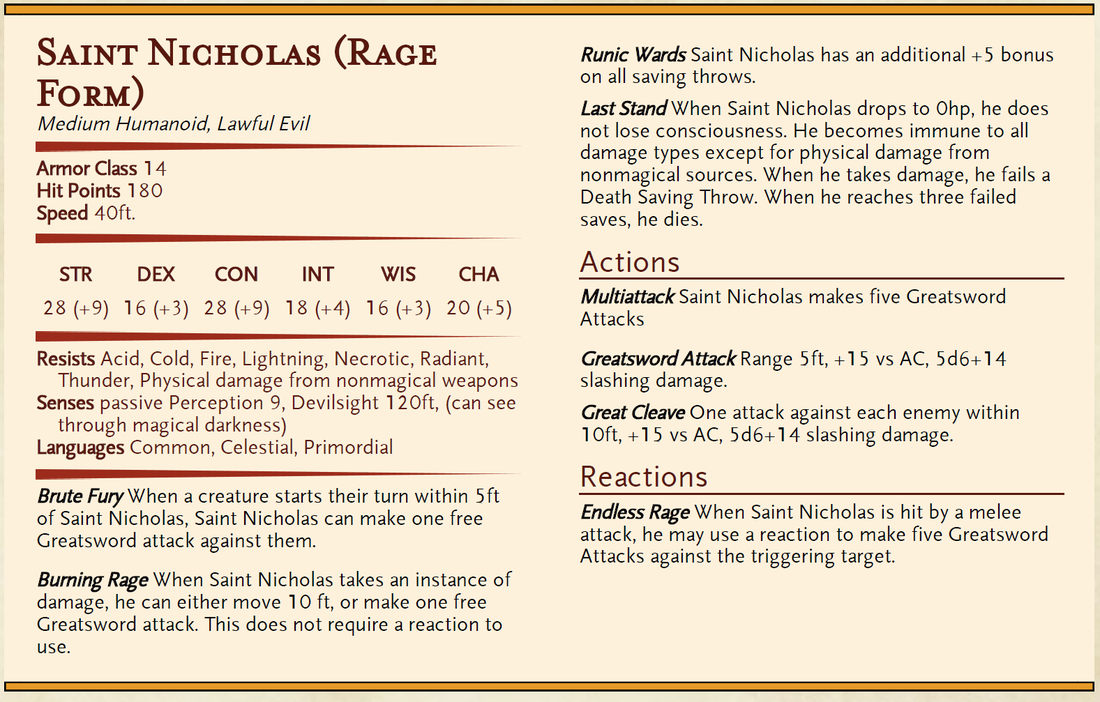
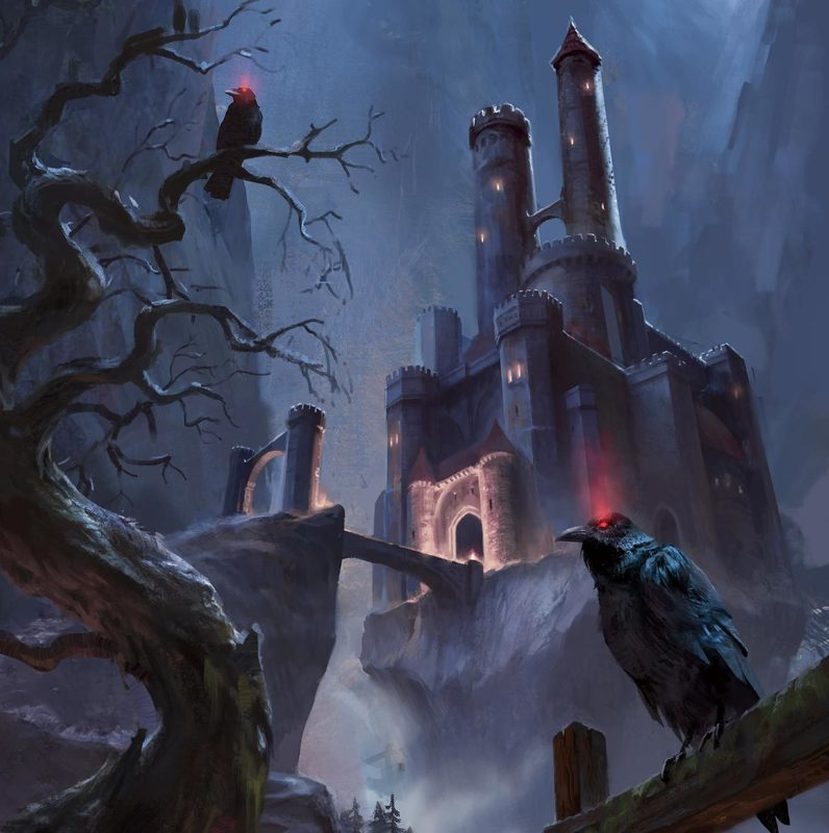

 RSS Feed
RSS Feed